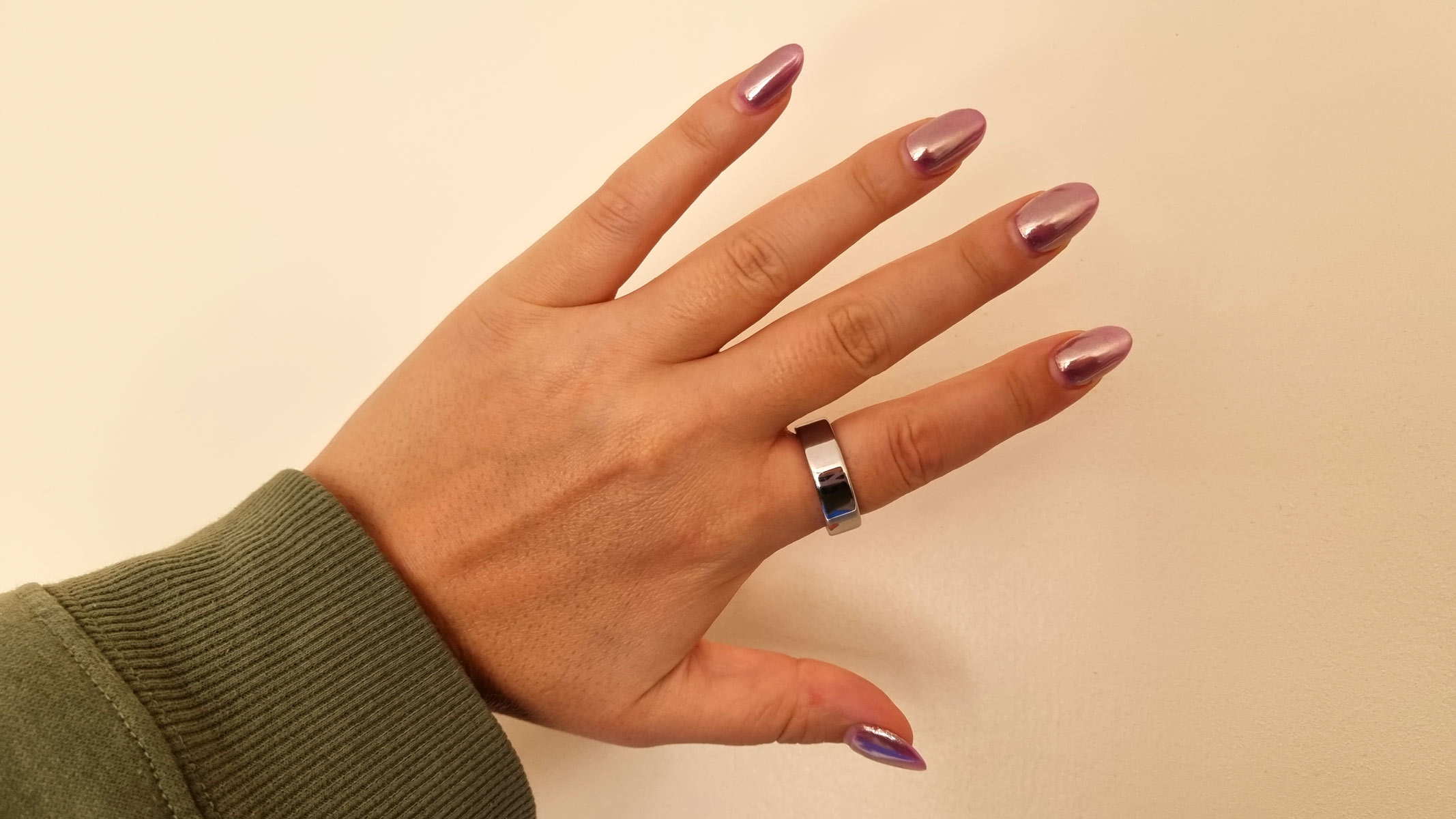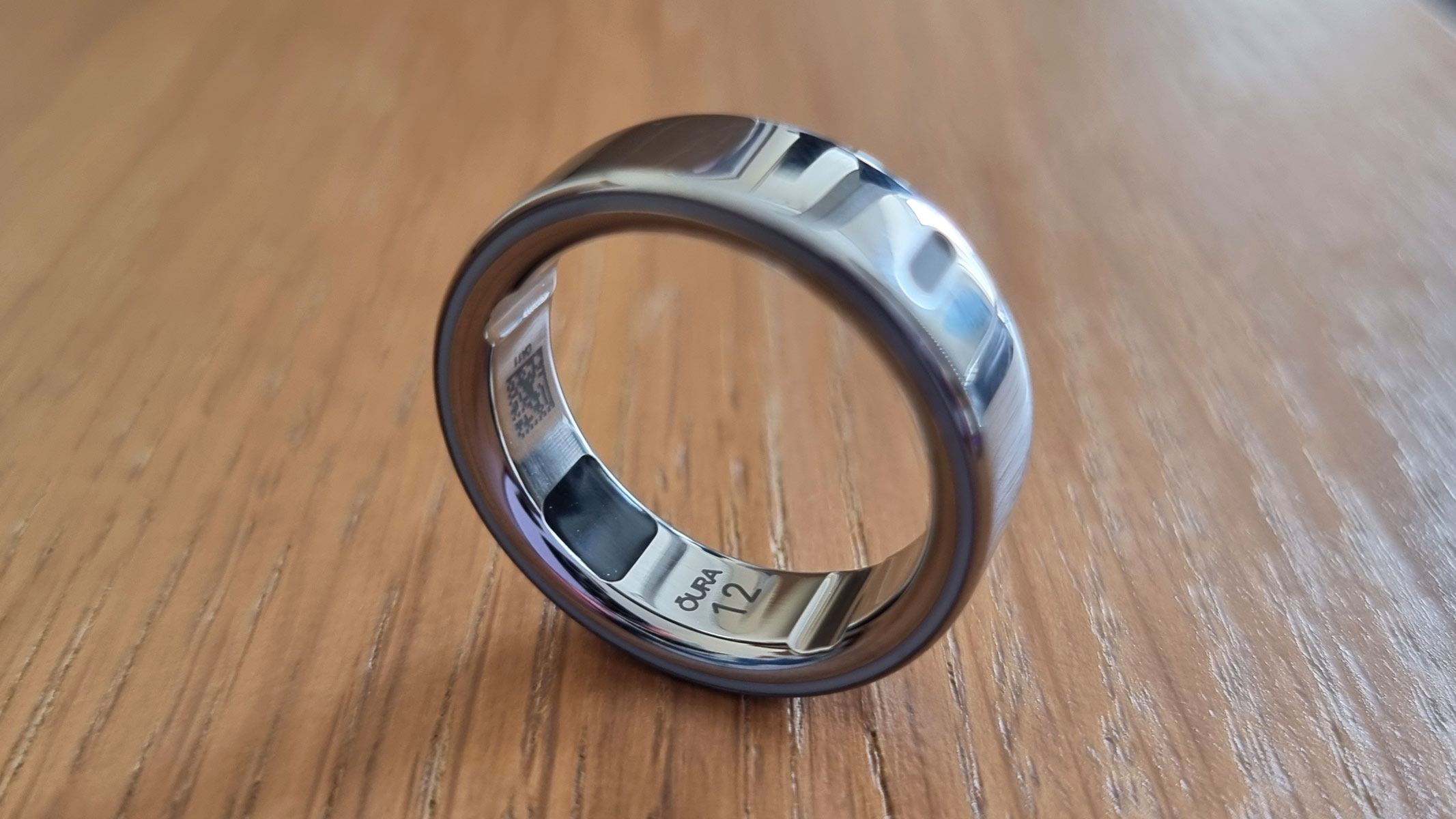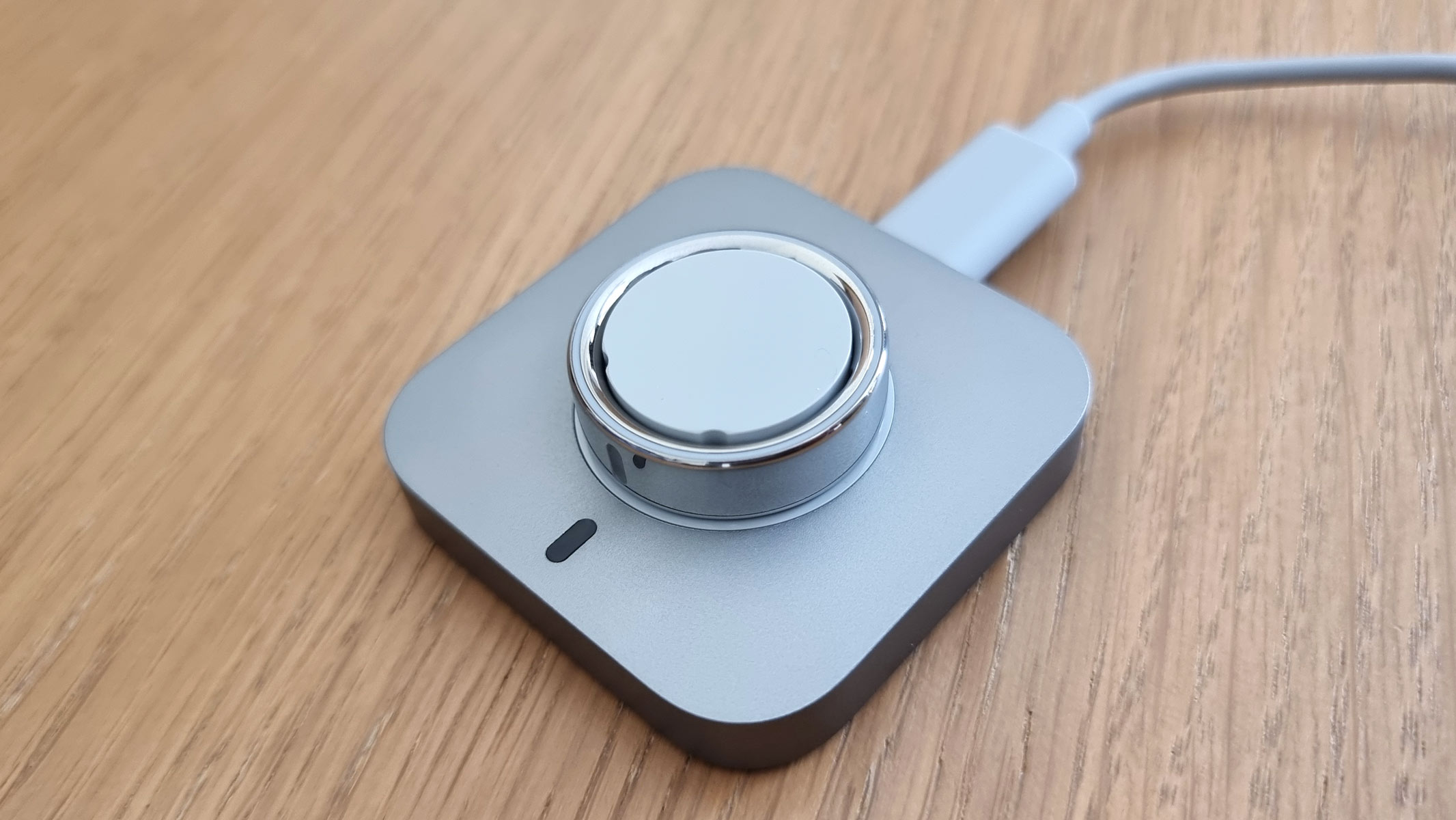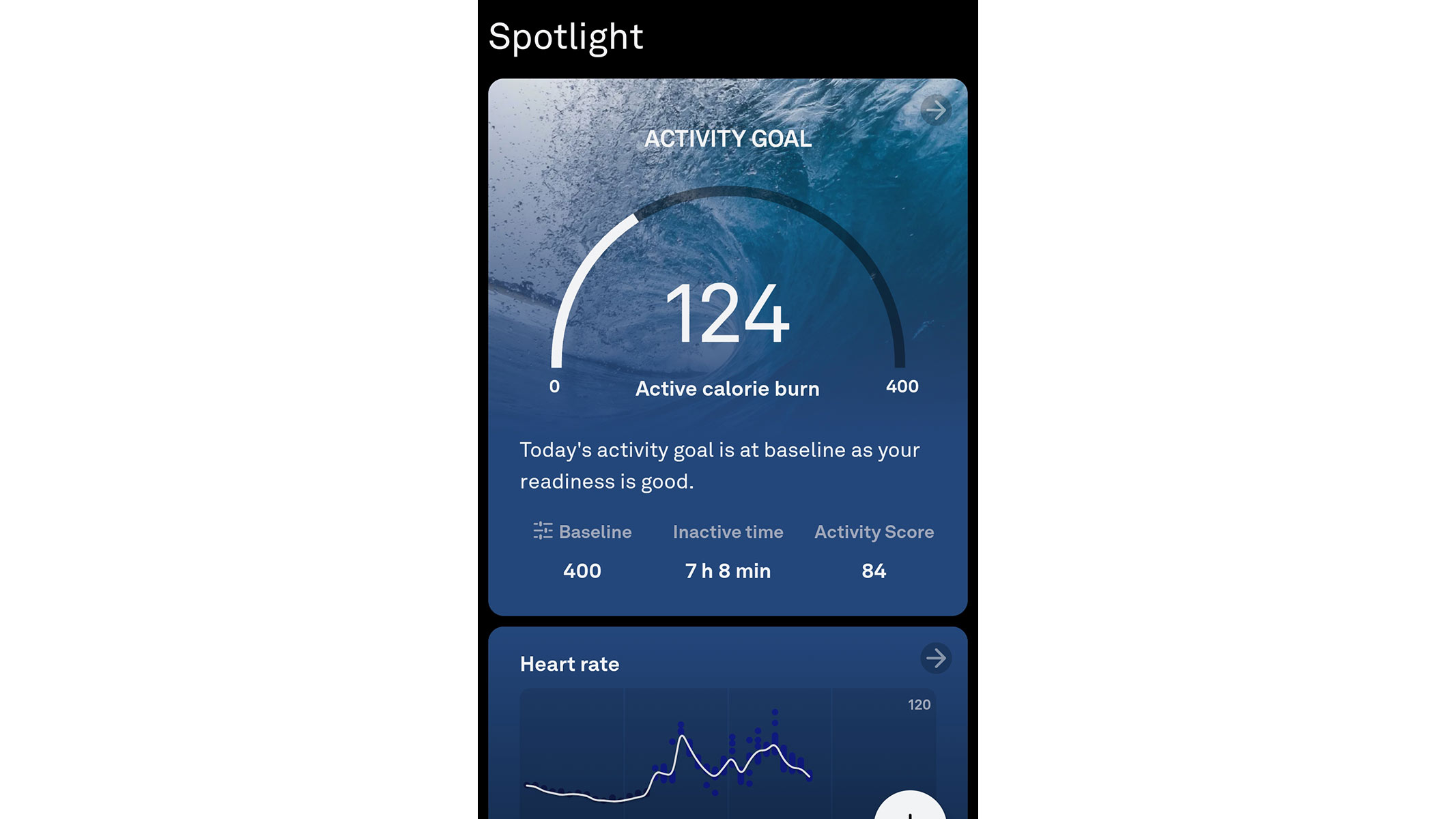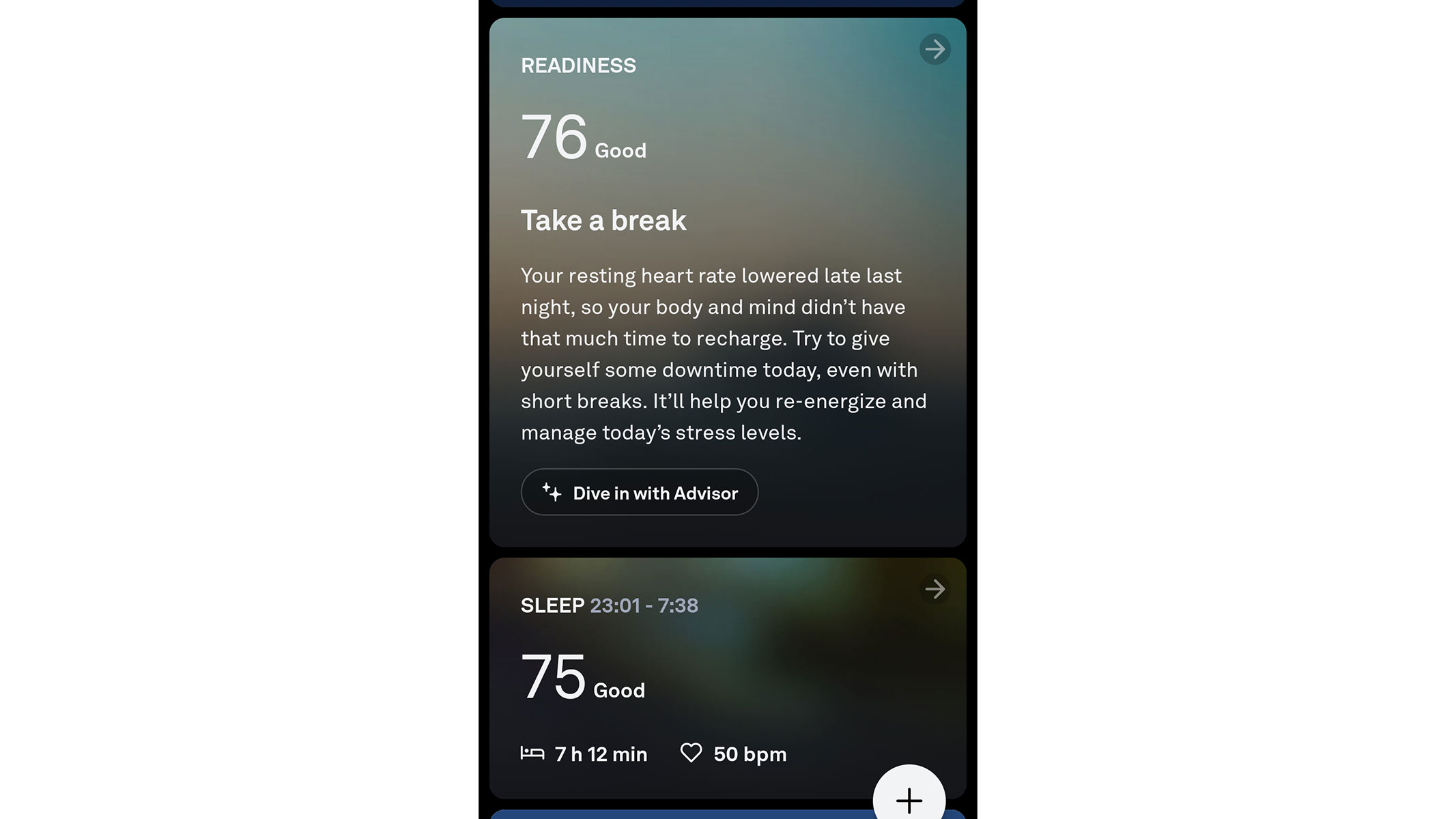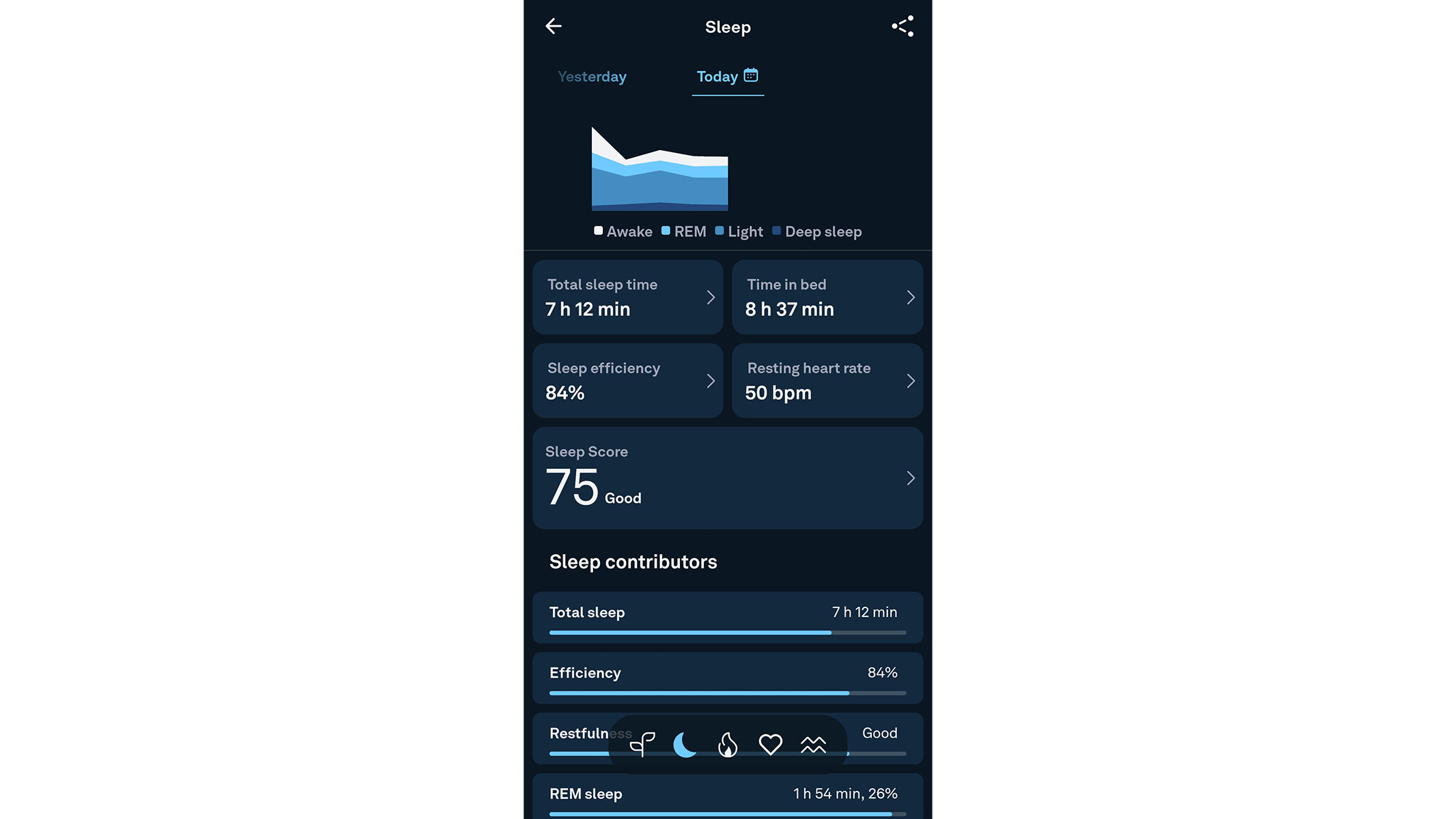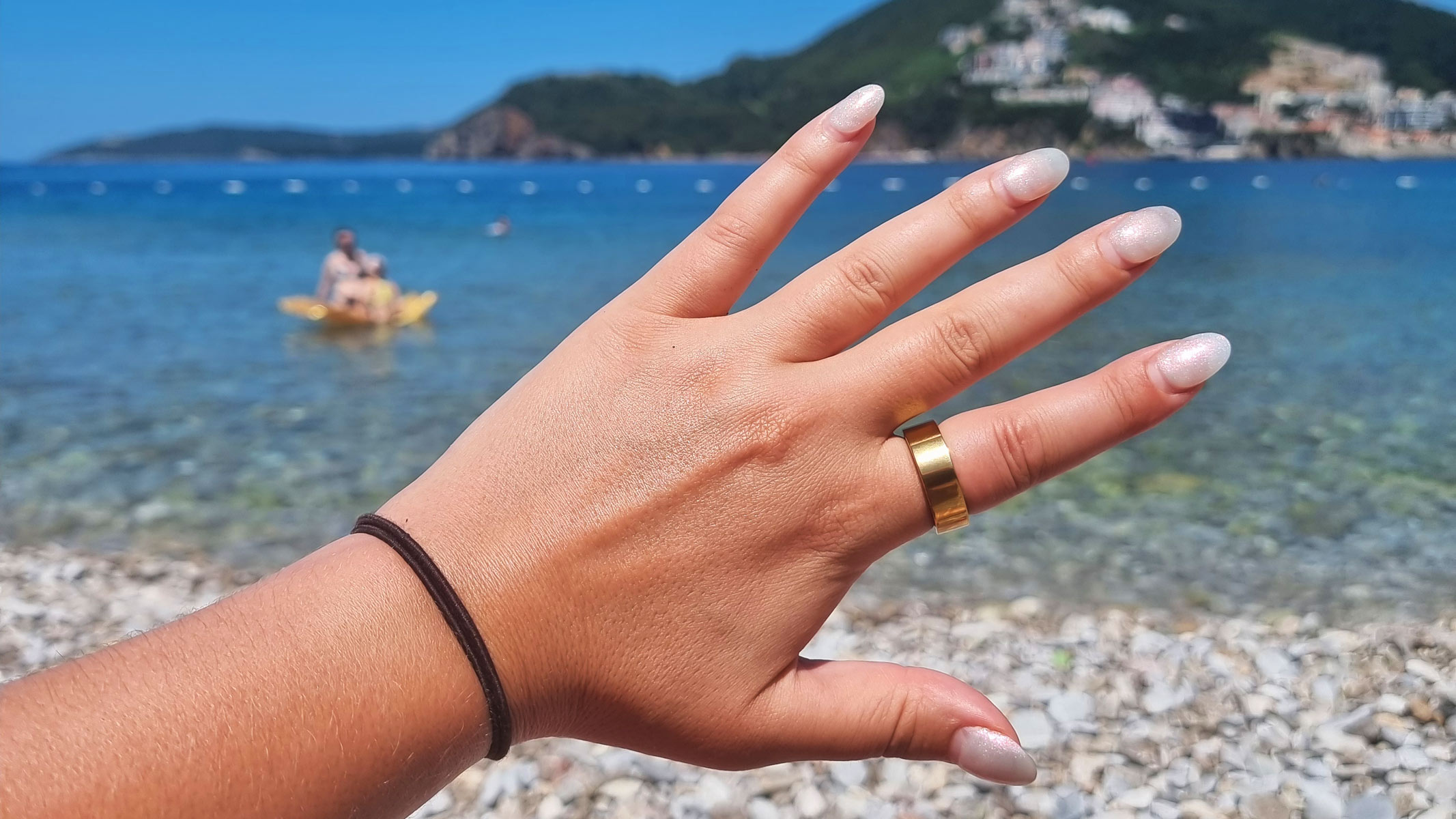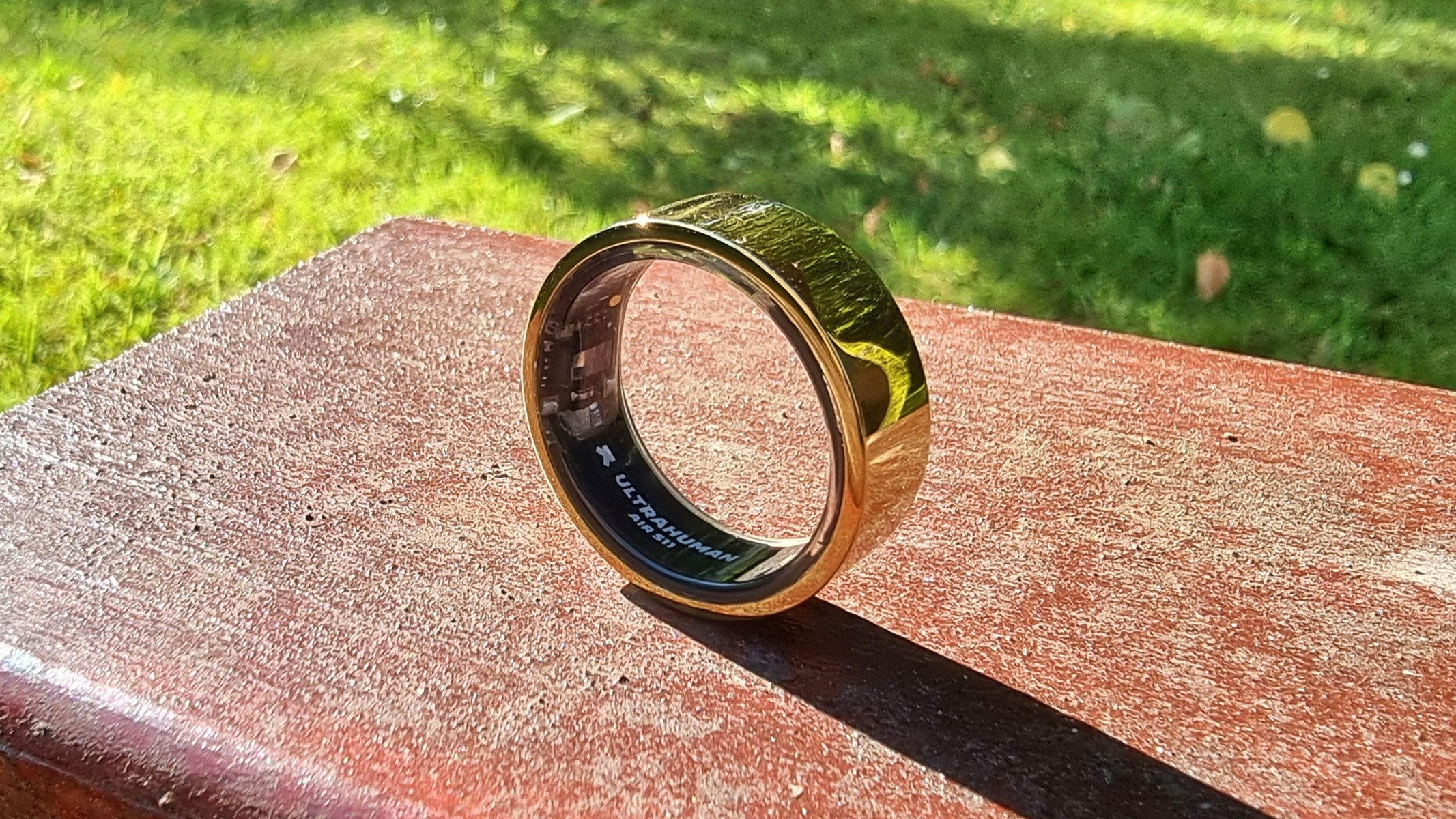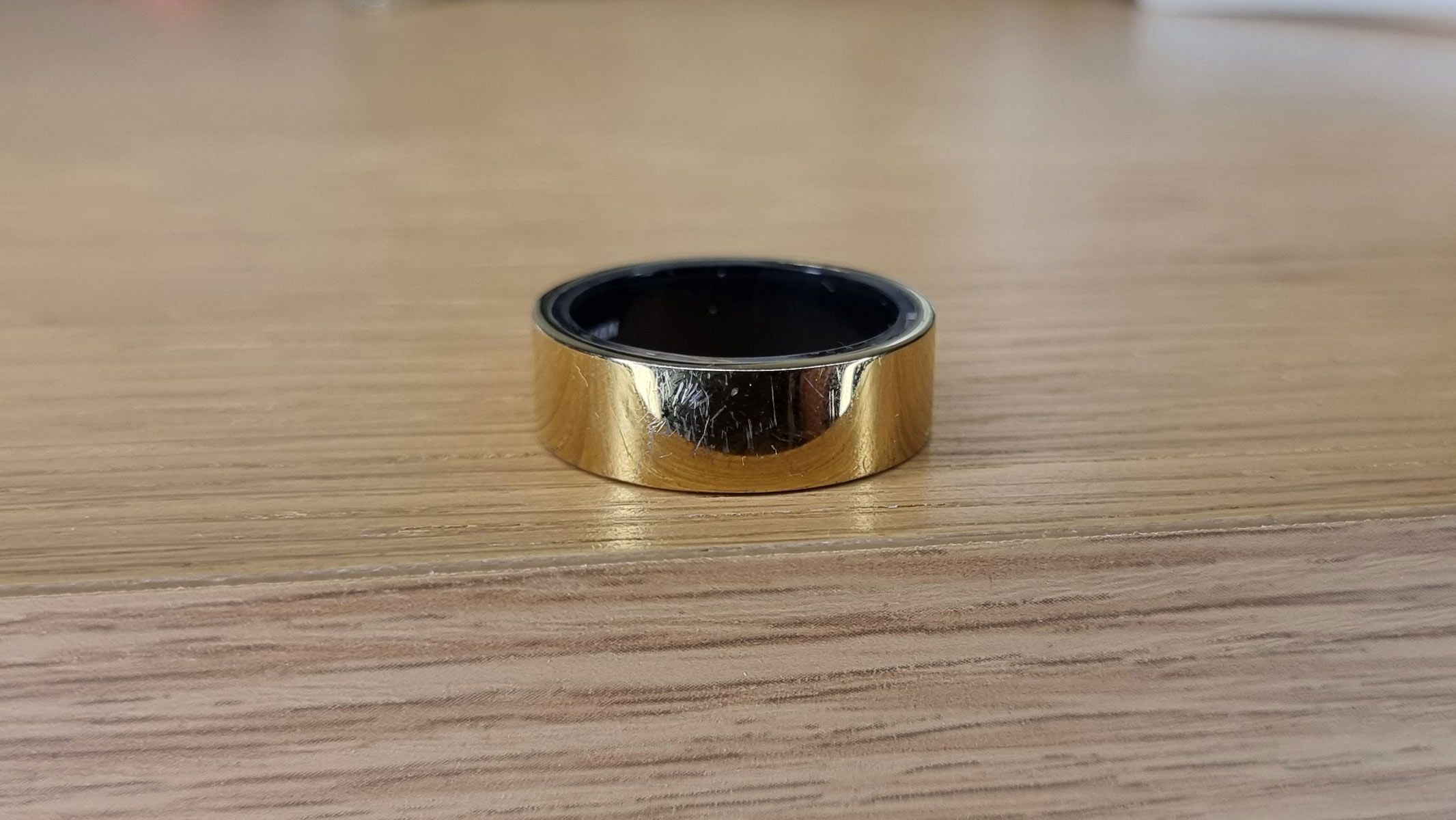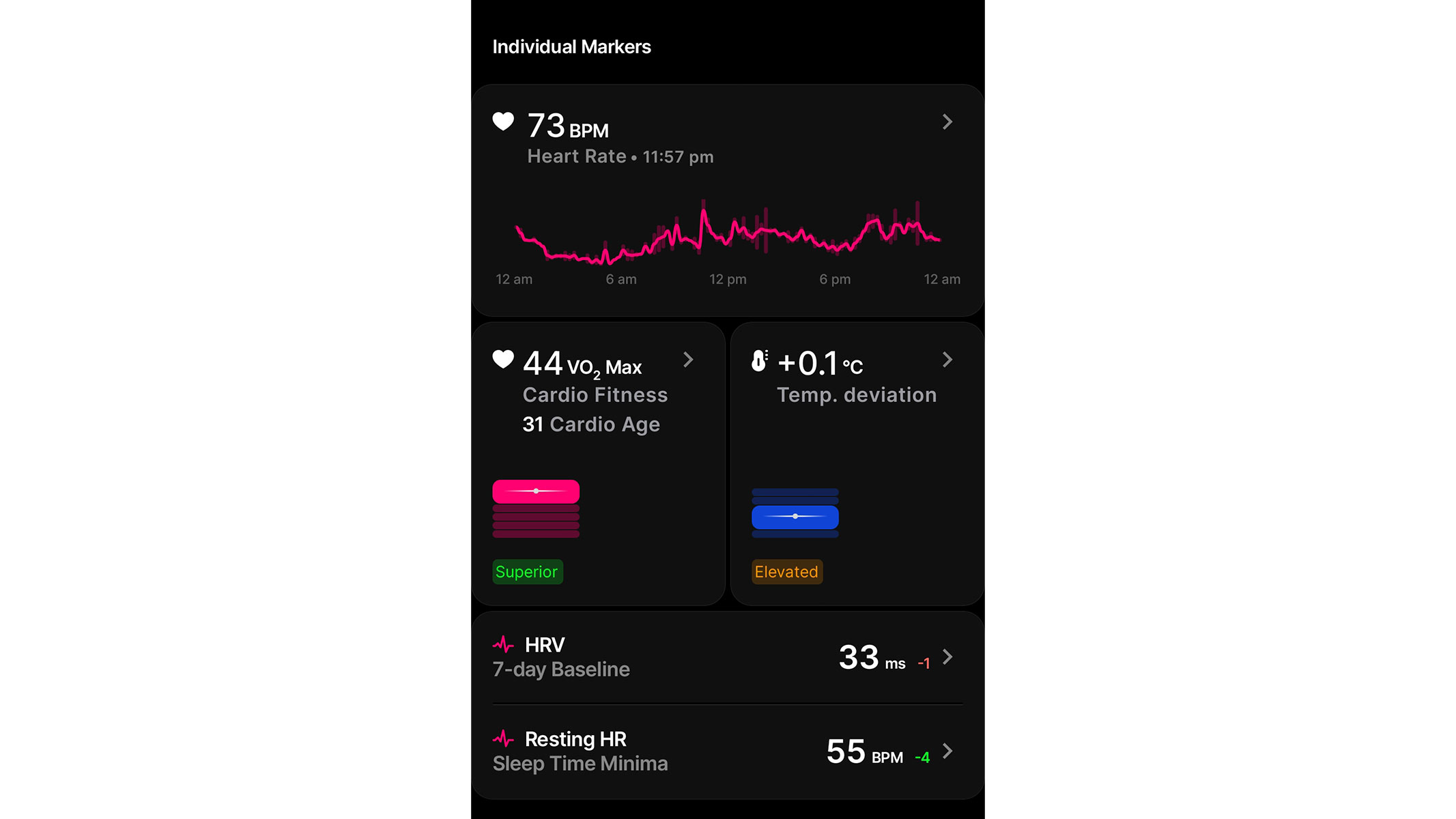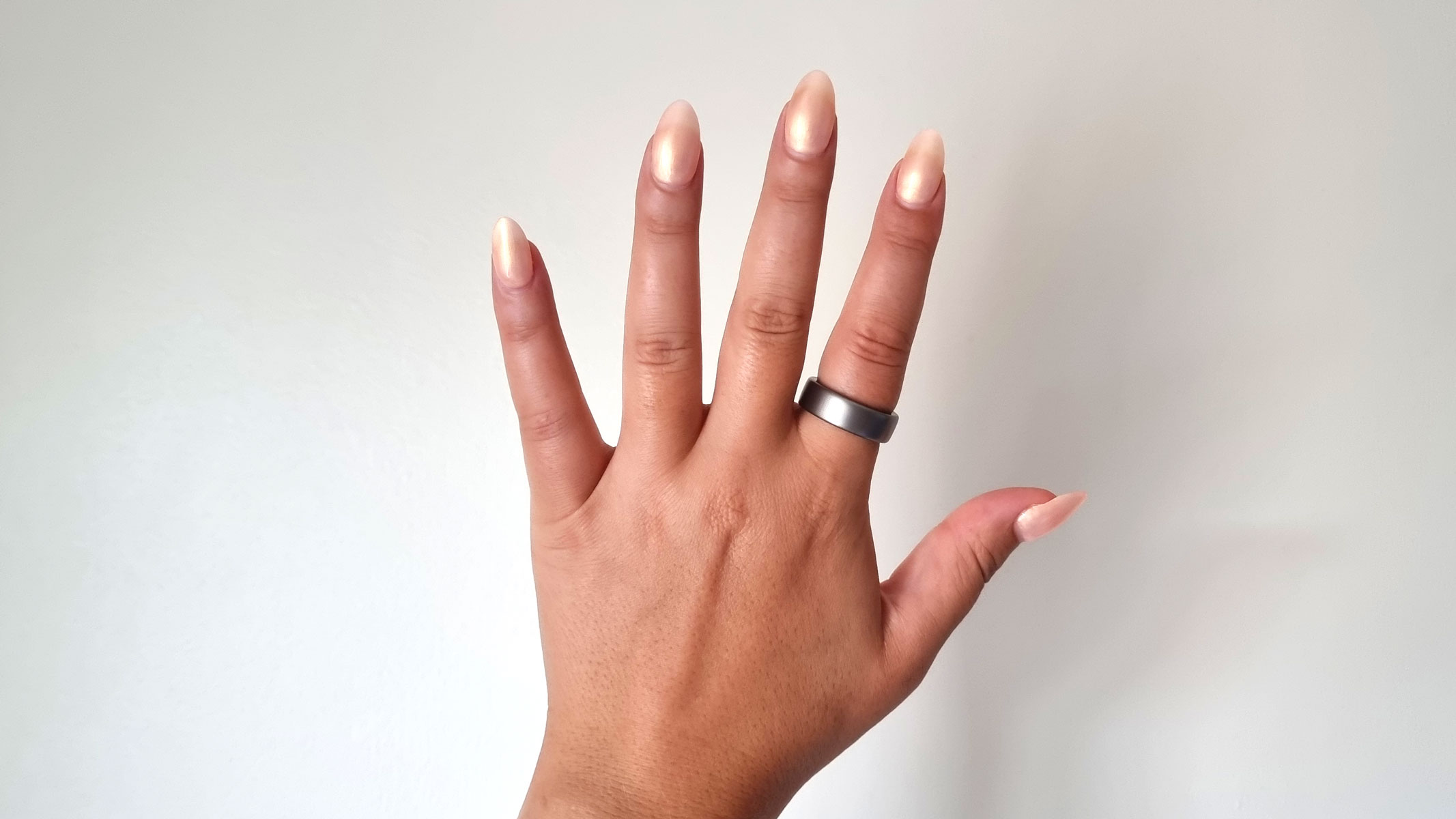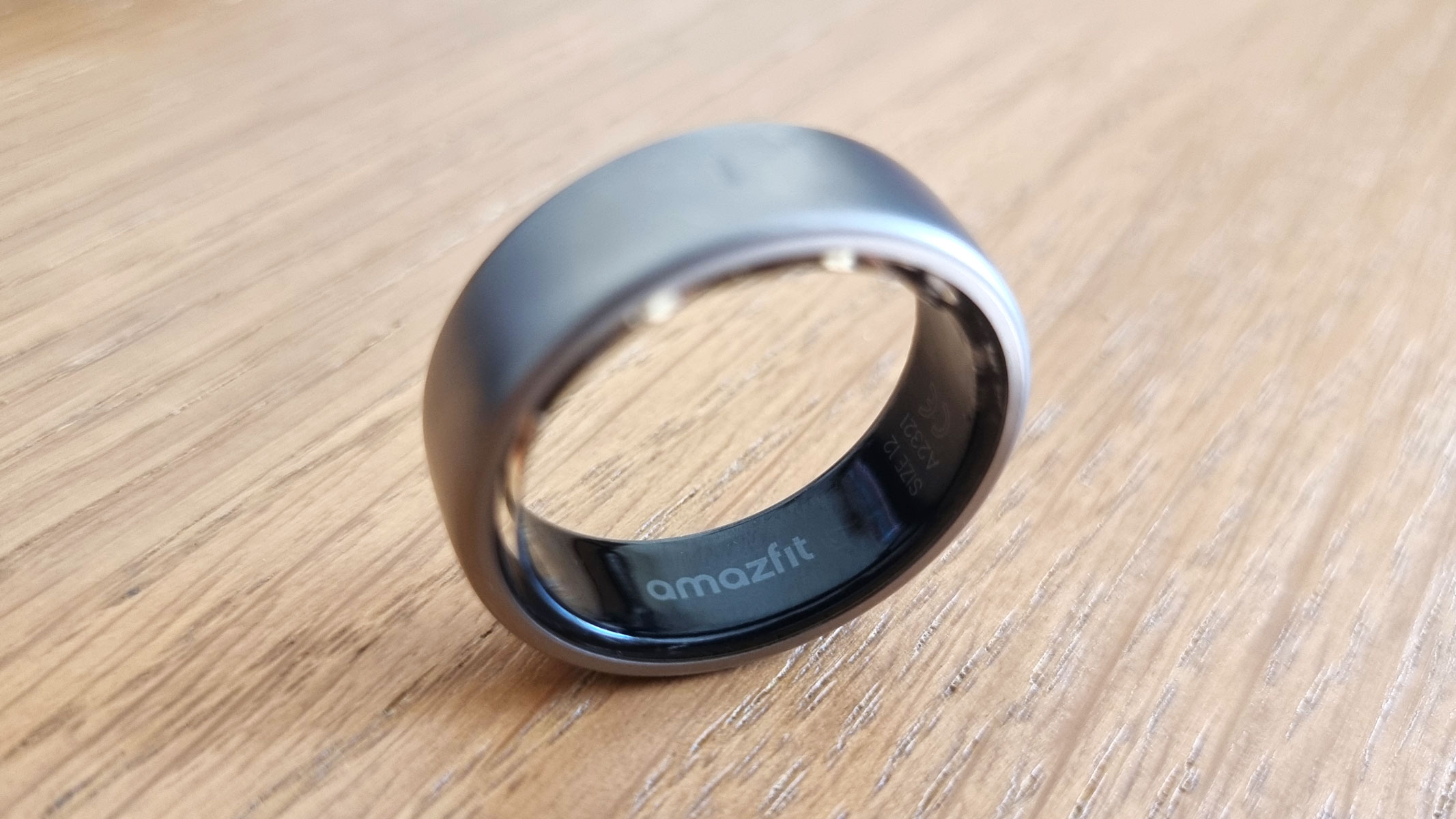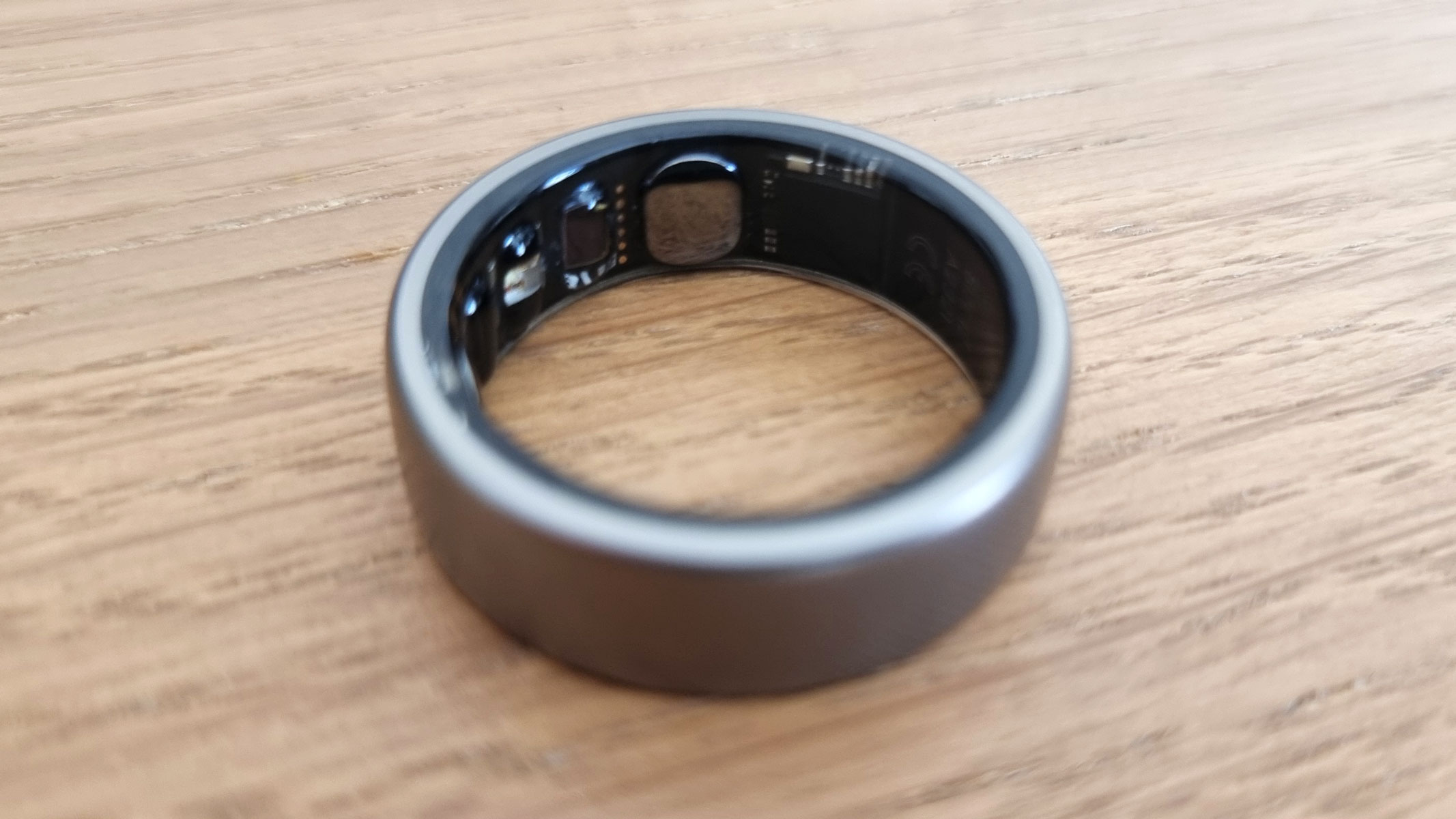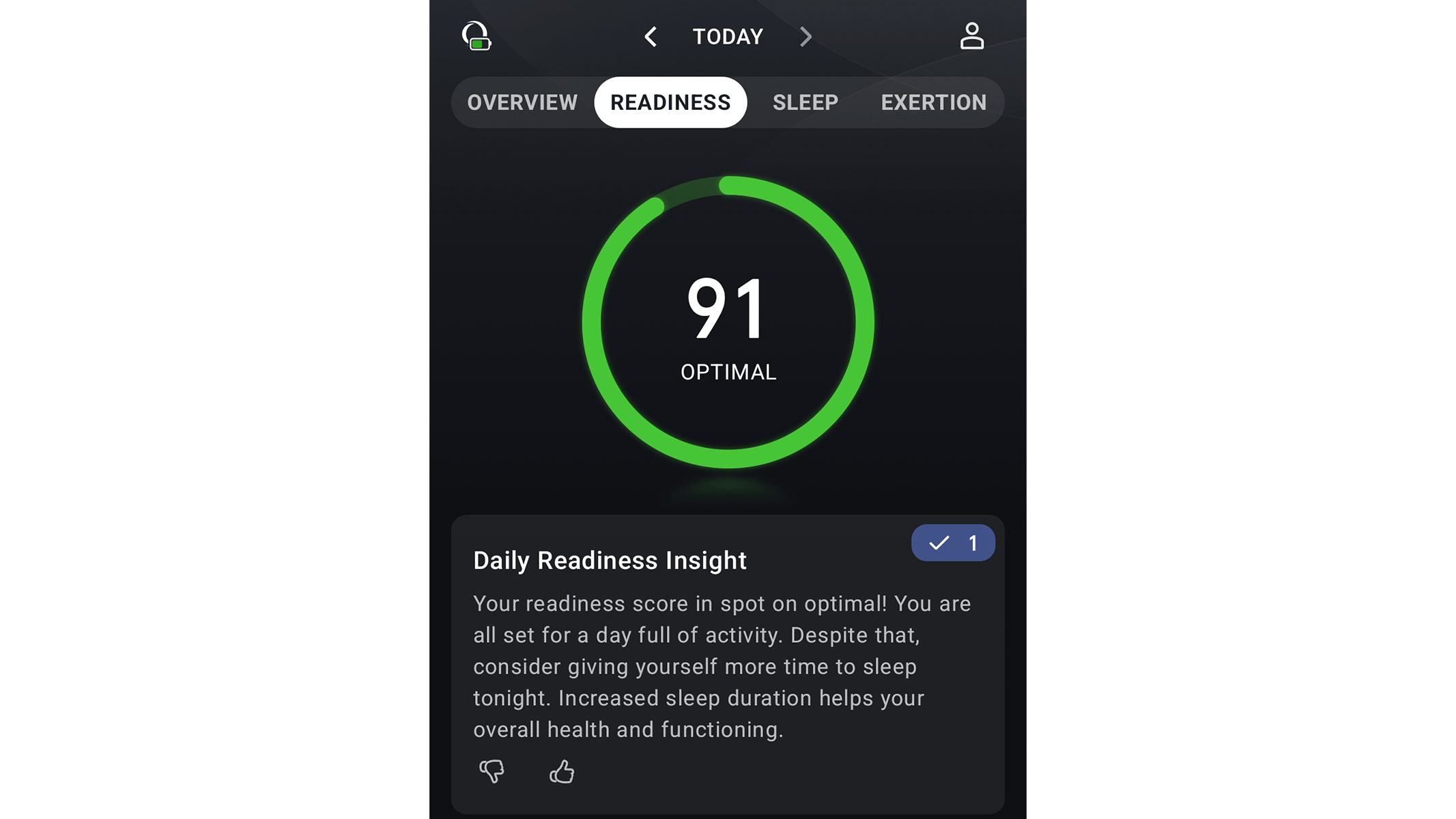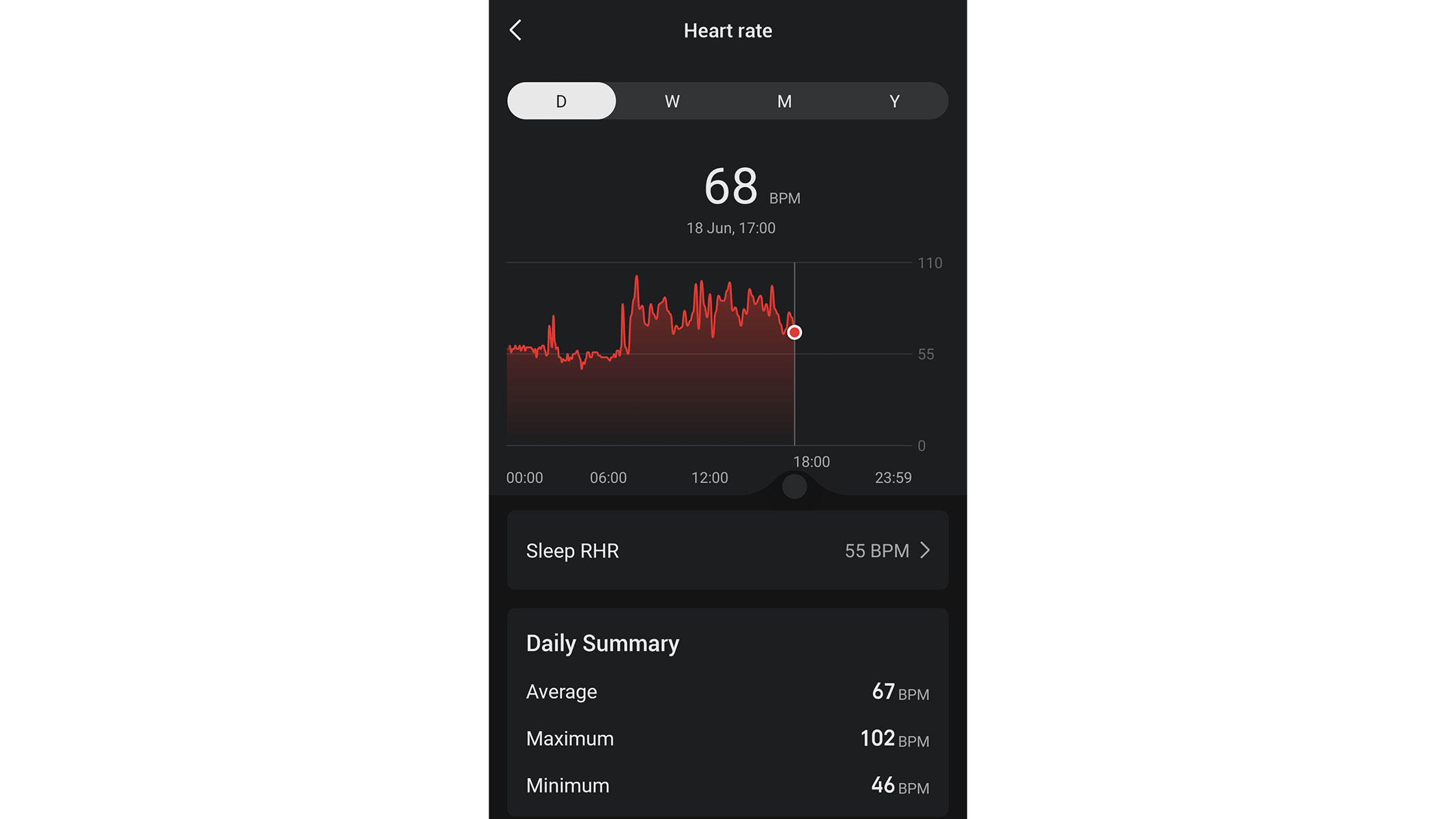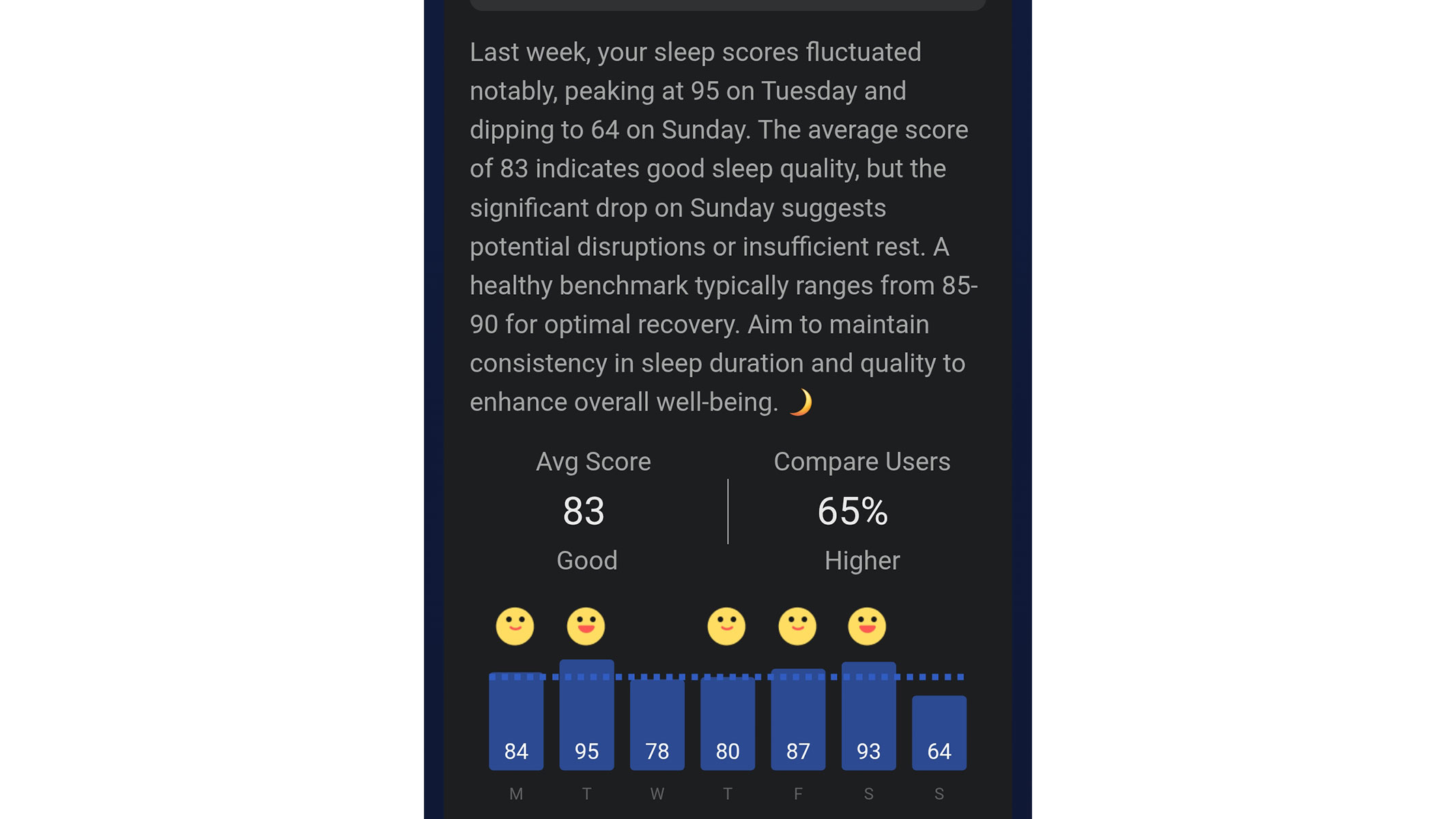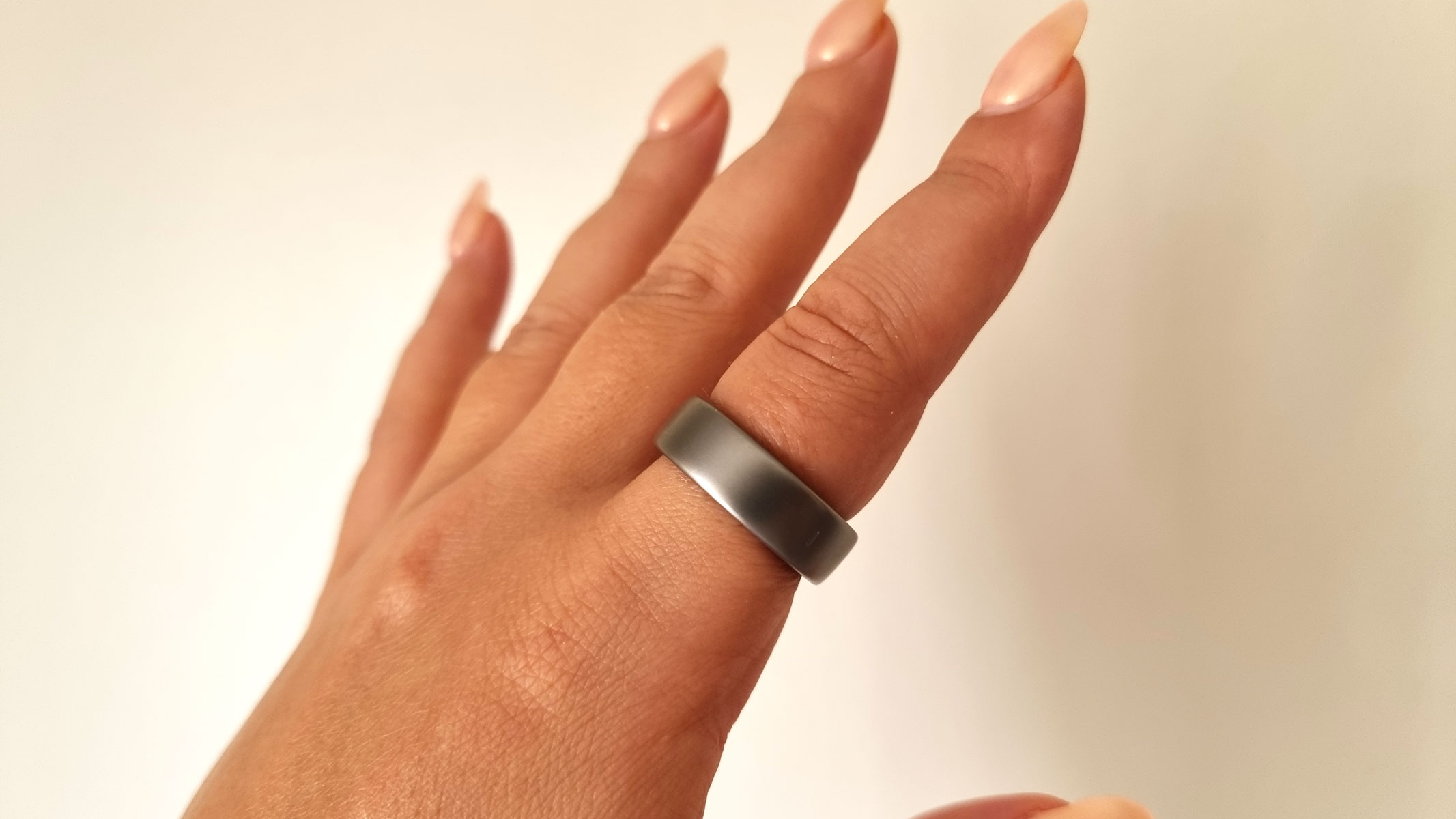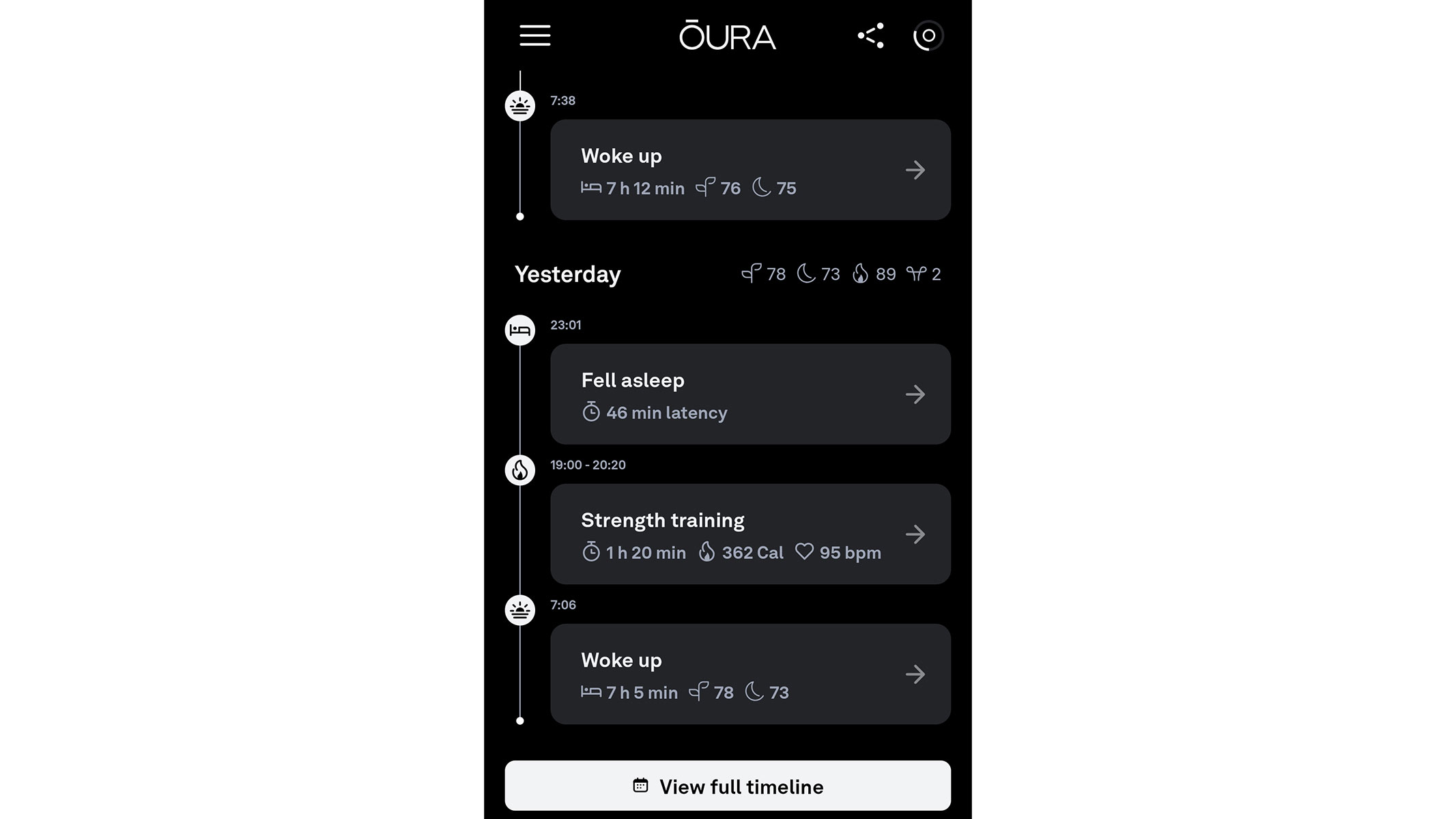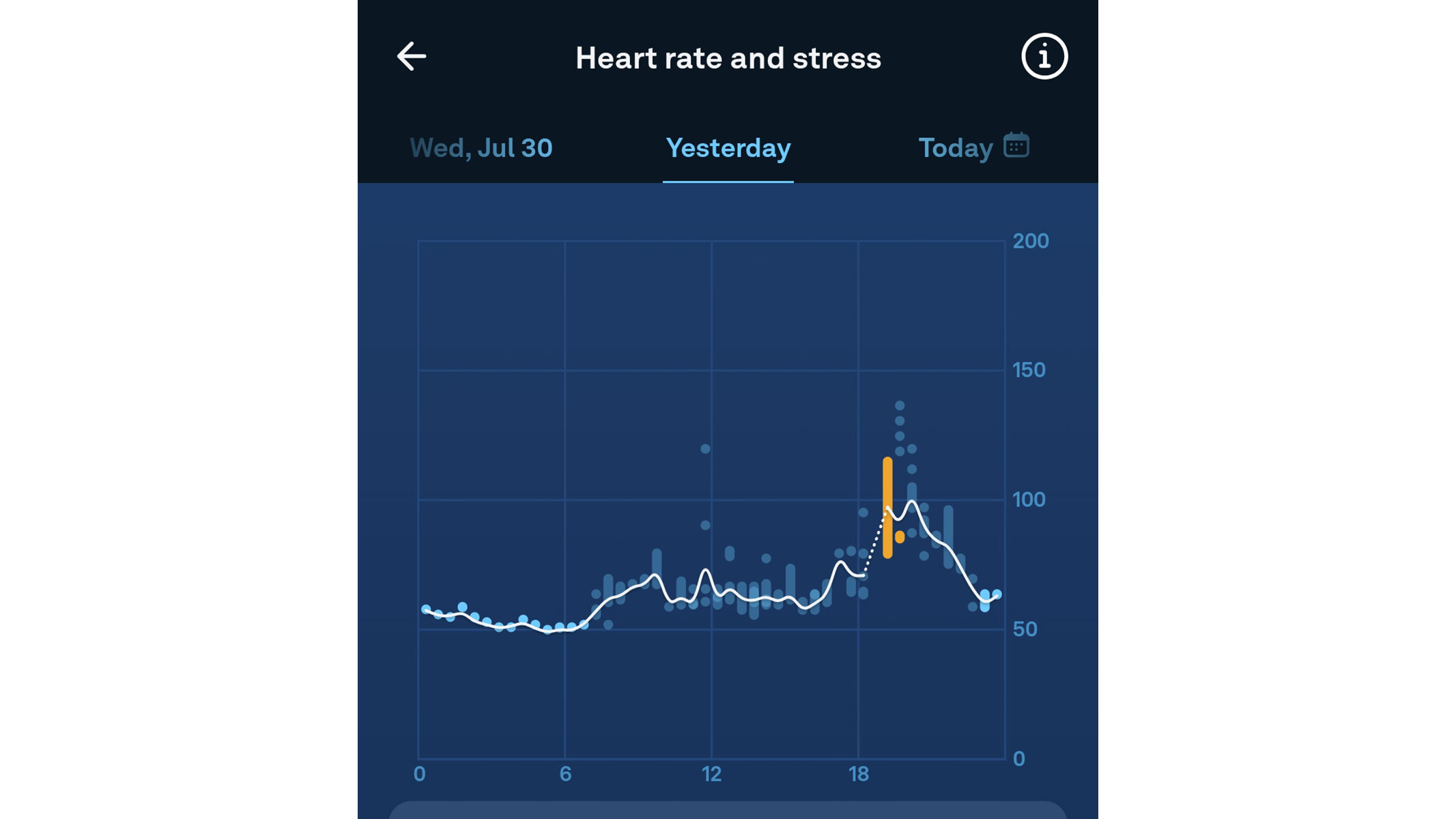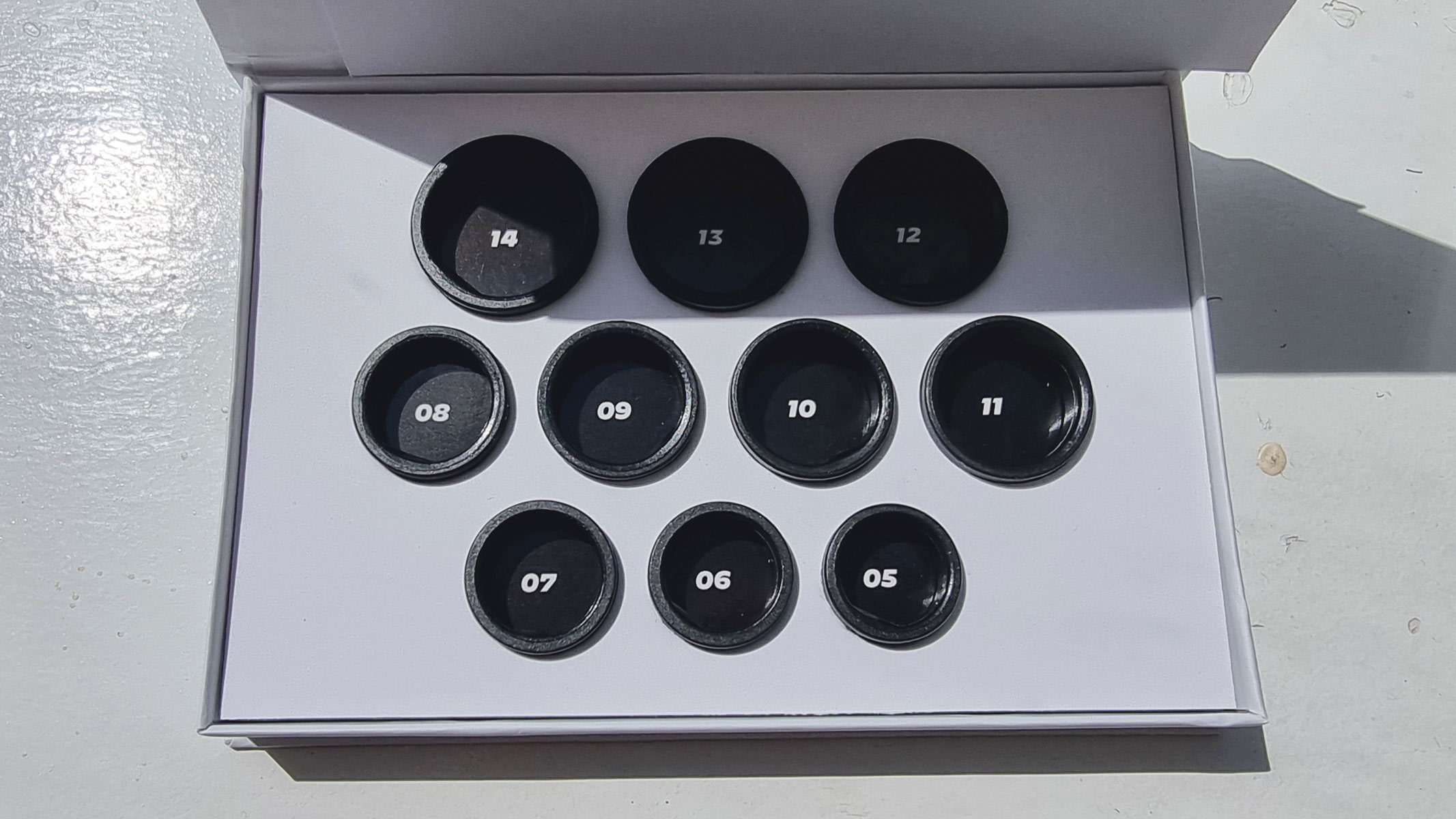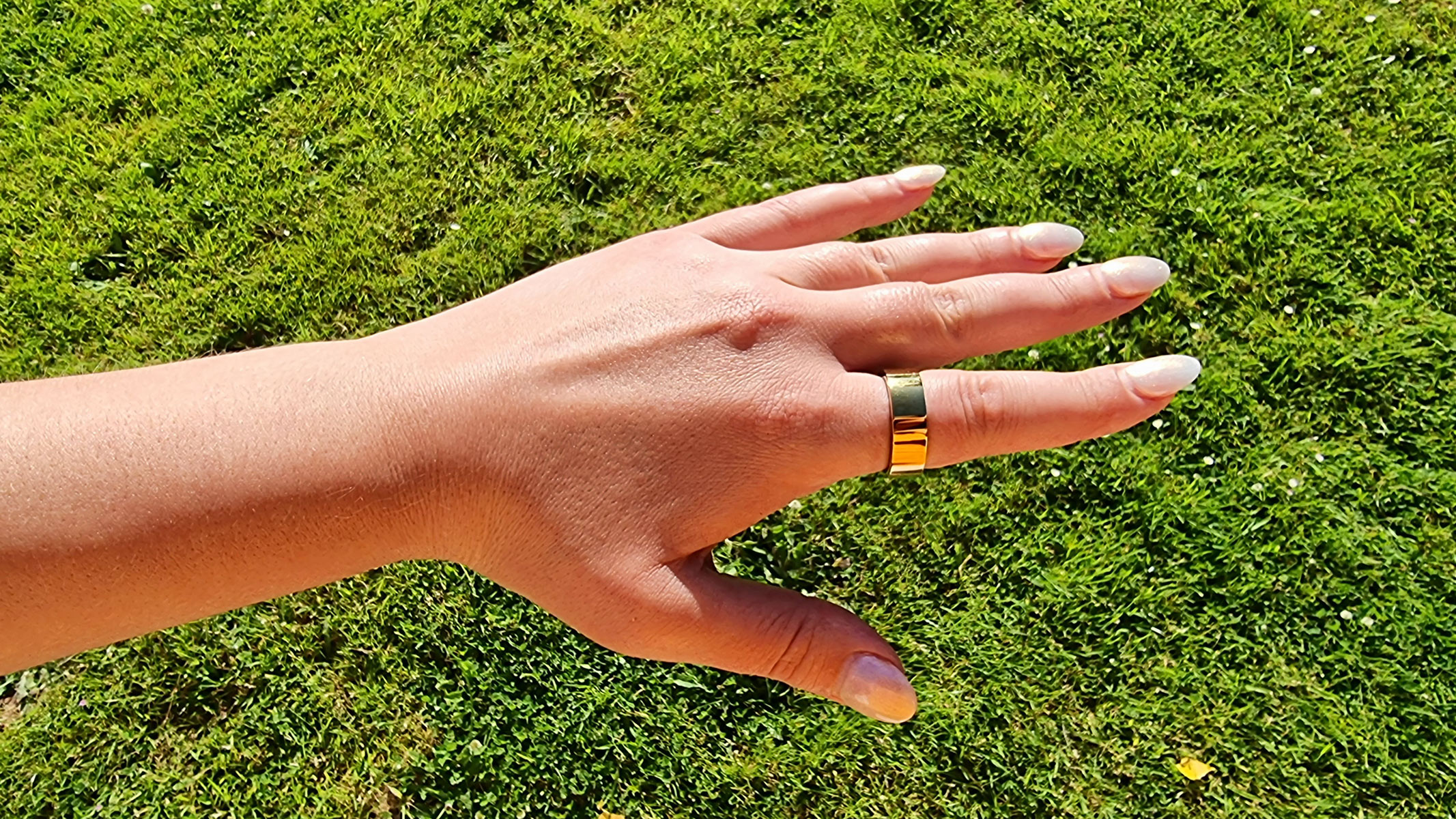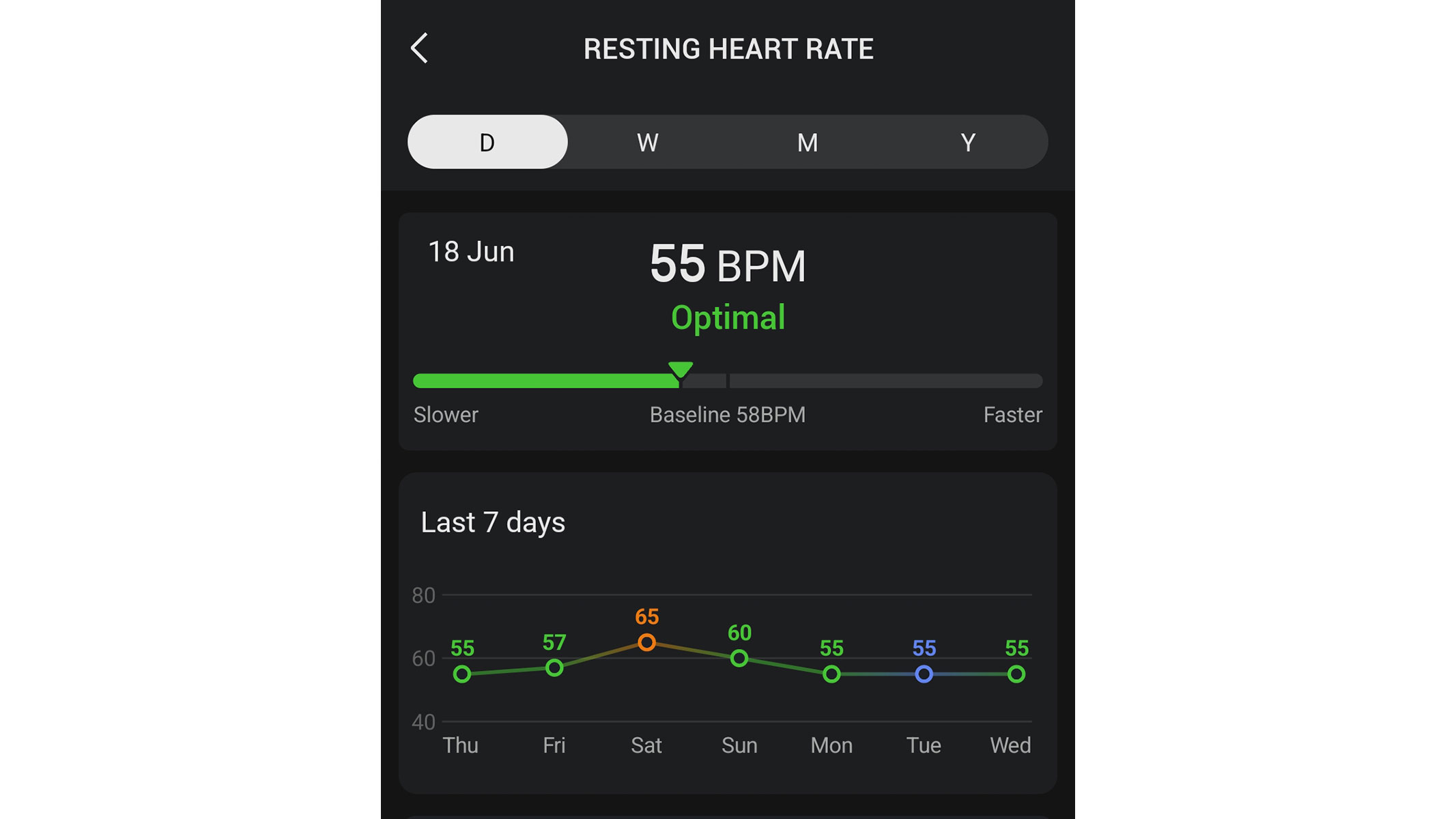Table of Contents
Smart rings are taking the world by storm, and for good reason. They are lighter, smaller and arguably more stylish than smartwatches, making them an excellent choice for all-day wear. More importantly, fitness tracker rings can provide in-depth assessments of sleep, rest and post-exercise recovery — something that wrist-worn wearables do not tend to focus on. Many fitness professionals like ourselves wear a smart ring alongside our tried-and-tested smartwatches so we can get a better insight into our health and exercise performance.
We have tried and tested multiple smart rings in relation to their design, features, tracking accuracy, battery life and other factors to give our verdict on their functionality and value for money. You can read more about our testing protocol in the How we test section, and if you are not sure if smart rings are right for you, scroll down to the FAQs section for more buying advice.
Smart rings do not tend to feature advanced motion sensors or GPS navigation, and as such, they may not be well-suited for tracking workouts. If logging exercise is your priority, consider investing in one of the best fitness trackers instead.
The quick list

Best overall
It is a market leader for a reason — the Oura Ring 4 offers some of the best sleep-tracking features out there and comes in an impressive range of colors and sizes. However, it requires a subscription and feels quite bulky.
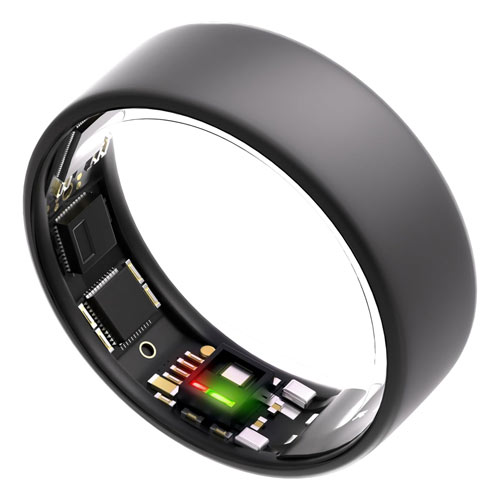
Best subscription-free
This subscription-free smart ring is lightweight, ultra-comfortable to wear and packed with comprehensive health-tracking tools. Our biggest gripe? Patchy app connectivity.

Best on a budget
The Amazfit Helio may not be as advanced and customizable as the other two rings, but it makes up for these shortcomings with accurate tracking, a comfortable fit and an affordable price.
The best smart rings we recommend in 2025
Why you can trust Live Science
Our expert reviewers spend hours testing and comparing products and services so you can choose the best ones for you. Find out more about how we test.
The best smart ring overall
Buy it if
✅ You need an unusually sized ring: It has the widest range of sizes of all the models in this guide.
✅ You are a fitness beginner: It offers plenty of easy-to-understand advice in a visually pleasing format.
✅ You want to prioritize accuracy: While its automatic activity detection can be a mixed bag, its sleep and heart rate tracking remain excellent.
Don’t buy it if:
❌ You are on a budget: It costs between $349 and $499, making it the most expensive option in this guide.
❌ You want something discreet: It is the chunkiest and heaviest smart ring here.
❌ You do not want to pay extra fees: The Oura subscription is needed to access all features, and it costs $5.99/month or $69.99/year.
The bottom line
???? Oura Ring (Gen 4): This smart ring hits the sweet spot with its excellent sleep-tracking features, personalized health advice that is both detailed and beginner-friendly, and an impressive range of sizes. That said, it also requires a subscription and some people may find it uncomfortable to wear. ★★★★
The Oura Ring Gen 4 takes the well-deserved top spot. This smart ring is an excellent all-rounder, suitable for both beginners and seasoned fitness professionals, and it comes with the most inclusive size range and the longest battery life of all the models mentioned in this guide. More importantly, the Oura Ring Gen 4 offers accurate sleep and heart rate measurements, a good selection of health-tracking tools and personalized advice that is both detailed and easy to understand — all delivered in a beautifully designed and genuinely engaging app. We think it is the best choice for most people, even though it is not particularly comfortable to wear or budget-friendly.
Performance is the strongest aspect of the Oura Ring Gen 4. It has the longest battery life of all the smart rings we tested (approximately eight days), and its tracking accuracy is either comparable or better than of the Ultrahuman Ring AIR and Amazfit Helio mentioned below. During our full Oura Ring Gen 4 review, we were particularly impressed with its precise sleep quality assessments, and we can confidently say this smart ring is one of the best sleep trackers on the market.
However, it is now without its flaws. Yes, the Oura Ring Gen 4 is an accurate tracker, but this also means that it has big sensors that inevitably bulk it up. We found this smart ring somewhat uncomfortable to wear, and even after a week of testing, we still could not get used to its ‘chunkiness’ and heavy-ish weight. Moreover, we were disappointed by its overzealous automatic activity detection — the Oura Ring Gen 4 has a habit of overestimating how much of your daily activity constitutes actual exercise. Lastly, this smart ring needs a subscription for full access to the features.
|
Attributes |
Notes |
|---|---|
|
Design |
Relatively bulky and somewhat uncomfortable to wear. |
|
Performance |
Great tracking accuracy and long battery life. |
|
Functionality |
Tracks sleep, stress, heart rate and physical activity. |
Best subscription-free smart ring
Buy it if
✅ You prioritize comfort: It is the slimmest and lightest model in this guide.
✅ You want comprehensive health advice: It can help you optimize a wide range of lifestyle factors, including your caffeine intake, sun exposure and even blood sugar levels.
✅ You are a data geek: It offers tons of in-depth measurements, making it a great option for fitness pros.
Don’t buy it if:
❌ You handle a lot of sharp objects: While it is relatively durable, it does not take much to scratch it.
❌ You want precise workout tracking: It may struggle to capture the heart rate correctly, especially during high-intensity activities.
❌ You are on a budget: While it is slightly cheaper than the Oura Ring Gen 4, it is still relatively expensive.
The bottom line
???? Ultrahuman Ring AIR: This subscription-free smart ring stands out among its competitors with its ultra-compact design and comprehensive health-tracking tools. However, its app connectivity leaves something to be desired. ★★★★
If you do not want to be tied down with subscriptions, consider the Ultrahuman Ring AIR. This smart ring is a close match to the Oura Ring Gen 4 in terms of tracking accuracy, battery life and customization, and in some aspects, it even outperforms it — for example, the Ultrahuman Ring AIR is more comfortable to wear and comes with a more comprehensive selection of health-tracking features. True, its patchy app connectivity can be annoying at times and it can scratch easily when handling sharp objects, but you would be hard-pressed to find a better subscription-free alternative to the Oura Ring Gen 4.
It is a particularly good choice for fitness pros. While all the smart rings mentioned in this guide can help you improve your exercise performance, the Ultrahuman Ring AIR is the most data-heavy and comprehensive in its approach to fitness tracking. Not only is it jam-packed with graphs and numbers, but it can also help you optimize a wide range of lifestyle factors, such as your caffeine intake or sun exposure, and it can even track your blood sugar levels (that said, the Ultrahuman blood glucose sensors are sold separately). Hardly any fitness tracker we tested places so much emphasis on metabolism and circadian rhythm, and these two factors are important for rest and recovery.
Design also scored highly in our books. The Ultrahuman Ring AIR proudly proclaims to be “the world’s most comfortable and compact smart ring” — and it rings true. It is the slimmest and lightest model of all the smart rings in this guide, and one that we enjoyed wearing the most. Not to mention, it simply looks good.
But, as we mentioned before, this smart ring is not without its flaws. During our full Ultrahuman Ring AIR review, we were particularly disappointed with its patchy app connectivity. While it worked fine most of the time, there were a significant number of times when we struggled to sync the data or even connect to the app. We could often resolve these issues by simply refreshing the app several times, but it can be annoying nevertheless.
Mixed durability was the other issue for us. While our Ultrahuman Ring AIR could easily sustain salt water, high temperatures and drops from height, it also seemed to scratch easily.
Lastly, its heart rate readings can become unreliable during high-intensity workouts — but then that is something we have seen in all the smart rings we tested.
Read more: Ultrahuman Ring AIR review
|
Attributes |
Notes |
|---|---|
|
Design |
Light, ultra-slim and very comfortable to wear. |
|
Performance |
Great tracking accuracy, but patchy app connectivity. |
|
Functionality |
Comprehensive health and fitness tracking features. |
Best budget smart ring
Buy it if
✅ You are on a budget: It costs $199 and is often on sale, plus it does not require a subscription.
✅ You are a fitness beginner: It does a good job of translating complex data points into personalized, easy-to-understand health advice.
✅ You have an Amazfit smartwatch: The Zepp app can sync the smart ring data with your watch’s workout logs, giving you a fuller picture of your overall health and fitness.
Don’t buy it if:
❌ You need an unusually sized ring: There are only three sizes available.
❌ You travel or go camping a lot: It has the shortest battery life of all the smart rings in this guide (our Helio lasted three days on average).
❌ You want advanced tracking features: While we would not call this smart ring basic, it is not too data-heavy either.
The bottom line
???? Amazfit Helio: This smart ring strikes a good balance between quality and affordability. On one side, the Amazfit Helio is durable, comfortable to wear and impressively accurate at tracking various health metrics; on the other, its battery life is relatively short and it lacks customization. ★★★★
Smart rings are still a relatively new invention, and that is fully reflected in their price. Both the aforementioned Oura Ring Gen 4 and Ultrahuman Ring AIR are priced well above $300, placing them at the same level as some of the best Garmin watches, while many other popular smart rings — such as the RingConn Gen2 or Evie Ring, for example — typically cost more than $200. So, is it still possible to get a decent smart ring on a budget? Absolutely.
The Amazfit Helio costs $199 and we frequently see it on sale for less than $170, which is roughly half of what you would pay for the Oura Ring Gen 4. That is not even the best part. This smart ring is entirely subscription-free, making the Amazfit Helio one of the most affordable smart rings we tested. If our hands-on experiences are anything to go by, it is also one of the best-value models out there.
This budget smart ring nails the essentials. During our full Amazfit Helio smart ring review, we were impressed with its good tracking accuracy, high sensitivity to our fluctuating stress levels and the copious amounts of collected health data. At the same time, we liked that this smart ring does not overload you with numbers and complex terminology, and that it offers plenty of actionable, easy-to-understand health advice. The Amazfit Helio is a perfect option for fitness beginners, even more so than the Oura Ring Gen 4.
Secondly, the Amazfit Helio was very comfortable to wear. It was slim and light enough to make us forget we were even wearing it. This smart ring proved to be surprisingly durable, too. It sustained only one tiny scratch throughout two months of testing. All in all, the Amazfit Helio offers great value for money — as long as you look past some minor inconveniences.
This smart ring is available in three sizes only (8, 10 and 12) and it comes in just one color (light bronze), so it will not suit everyone. On top of that, the Amazfit Helio has a relatively short battery life. This smart ring lasts approximately three days on a single charge, so if you travel or go camping a lot, it may not be the best option for you.
Read more: Amazfit Helio smart ring review
|
Attributes |
Notes |
|---|---|
|
Design |
Light and comfortable to wear, but not particularly customizable. |
|
Performance |
Great tracking accuracy, but a relatively short battery life. |
|
Functionality |
Beginner-friendly sleep and recovery tracking features. |
Best smart rings: comparison
|
Product |
Rating |
Sizes |
Colors |
Battery life |
Water resistance |
Sizing kit |
|
Oura Ring Gen 4 |
★★★★ |
Twelve (4 – 15) |
Silver, black, brushed silver, stealth, rose gold and gold |
Up to 8 days |
10 ATM |
Yes |
|
Ultrahuman Ring AIR |
★★★★ |
Ten (5-14) |
Titanium, black, gray, gold and silver |
Up to 6 days |
10 ATM |
Yes |
|
Amazfit Helio |
★★★★ |
Three (8, 10 and 12) |
Bronze |
Up to 4 days |
10 ATM |
No |
Contributing experts & product testers

Anna Gora is a health writer, certified personal trainer, nutritionist and health coach with over 12 years of professional experience. She holds a Bachelor’s degree in Nutrition from the Warsaw University of Life Sciences, a Master’s degree in Nutrition, Physical Activity & Public Health from the University of Bristol, as well as various health coaching certificates. Anna is passionate about fitness tech and promoting the benefits of diligent health tracking, and has personally tried and tested all the smart rings in this guide.

Dr. Nicola Cann is a paediatric sleep practitioner and sleep psychologist based in Singapore. She has a PhD in educational and child psychology from the University of East London, and specializes in treating and managing insomnia, sleep-related anxiety and other sleep disorders. For this piece, Nicola commented on the accuracy and suitability of smart rings for sleep tracking and advised on how to choose the best device.

Dr. Lindsey Calcutt is a biomedical engineer and the CEO of Incora Health, a company developing the first wearable earring that tracks the menstrual cycle. She holds a doctorate in biomedical engineering from Clemson University and has amassed over 20 years of experience developing medical devices. Lindsey told Live Science about the pros and cons of smart rings and shared her tips on choosing the best device.

Kevin Rail is a certified personal trainer and sports nutritionist with over 25 years of professional experience, as well as a senior contributor at Premium Saunas, a US-based company that builds and sells traditional and infrared saunas. For this piece, Kevin discussed the accuracy of smart rings when tracking different types of activities, and commented on their durability and waterproofness.
Best smart rings: Frequently Asked Questions
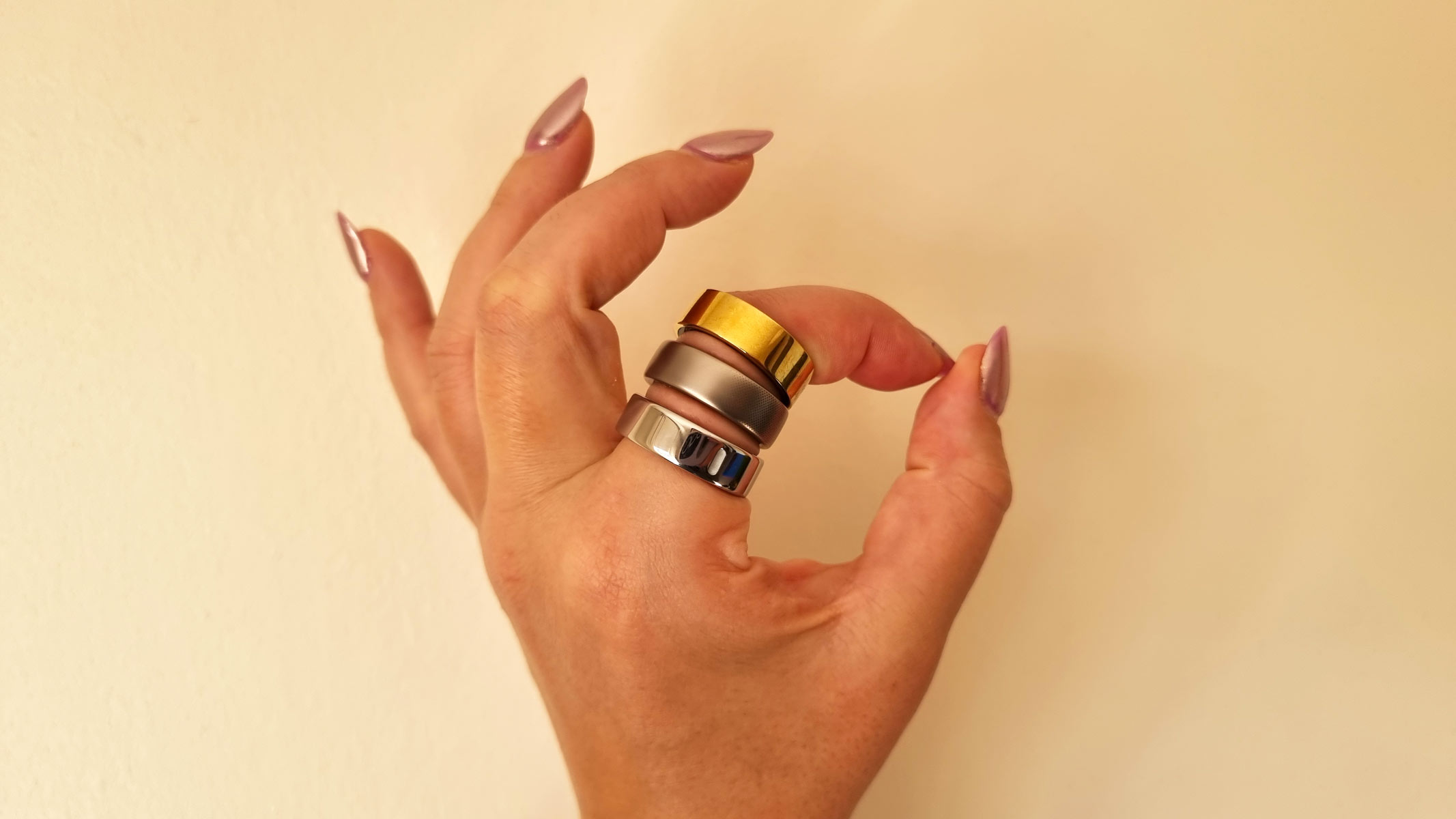
Do smart rings track your heart rate accurately?
How accurate are smart rings? The answer to this question largely depends on what you want to use them for. Generally, smart rings do a good job of measuring your heart rate, and studies have shown that they may be even better at it than wrist-worn wearables. Most fitness trackers use photoplethysmography (PPG), a relatively simple optical technology that detects heart rate by measuring changes in the volume of blood that flows under the skin. This is where finger-based wearables can have an edge over smartwatches — fingers have a richer network of blood vessels than wrists do, making it easier for the PPG to capture accurate data.
That said, fingers are also more prone to temperature changes and motion artifacts — disruptions to the PPG signal caused by rapid movements. “The biggest challenge with finger-based wearables is not the technology — it is the location. For example, rings can shift during activities, creating significant data gaps,” Dr. Lindsey Calcutt is a biomedical engineer and the CEO of Incora Health, told Live Science. Put simply, smart rings tend to be better at monitoring sleep and recovery rather than tracking high-intensity workouts.
The size of smart rings is another important factor here. “Finger-based wearables face an inherent trade-off: make them small enough to be comfortable, and you limit battery life and sensor capabilities. Make them robust, and they become bulky,” Calcutt said. As such, a lot may depend on the design of your smart ring.
Can I still use my smart ring to track workouts?
It depends. As we mentioned above, smart rings are not the best option for logging workouts, but that does not mean they should not be used at all. For example, a lot may depend on the type of activities you track, Kevin Rail, a certified personal trainer and sports nutritionist, told Live Science.
“When the ring fits correctly, it can be impressively accurate at measuring resting heart rate and oxygen saturation. Some clients have noted heart rate readings that stay within three beats per minute of a chest strap during steady cardio, which is good enough for tracking trends,” Rail said. “[On the other hand], the sensors in smart rings can lag during rapid interval work, so it is best to rely on them for recovery insights rather than real-time coaching during sprints or burpees,” he said.
Smart rings are also not well-suited for activities that involve a lot of manual handling, such as weightlifting and other forms of resistance training. “Smart rings can rub the skin during long barbell sets or feel snug when fingers swell in the heat. Because the ring surface is exposed, a careless scrape against a dumbbell may leave scratches, so gym sessions demand a little extra awareness,” Rail said.
Are smart rings waterproof?
Most smart rings are 10ATM certified, meaning they are waterproof up to 328 feet (100 meters). This means you can confidently wear them when swimming or showering, Rail said. That said, high levels of moisture may still damage your smart ring. “For example, extreme heat and humidity inside a traditional sauna can strain the battery seal, so it is safer to take the ring off or limit wear to gentler infrared sessions,” Rail explained.
Are smart rings good for sleep tracking?
Yes, smart rings tend to perform well as sleep trackers, and they may be even better than most smartwatches. While neither finer- or wrist-worn devices are as accurate as polysomnography (a lab-based sleep study), smart rings tend to collect more reliable measurements of heart rate variability and skin temperature — two key metrics for assessing sleep, Dr. Nicola Cann, a paediatric sleep practitioner and sleep psychologist, told Live Science.
However, the sleep-tracking accuracy of smart rings may differ depending on who is using them. “For example, smart rings tend to be less sensitive to movement, which means they can overestimate total time asleep, especially in those who lie still while awake,” Cann said.
Can smart rings detect sleep disorders?
Smart rings are not diagnostic devices and should not be treated as such. “Finger-based wearables do not collect the full range of clinical data needed for diagnosis—particularly the psychological and behavioural factors like sleep-related anxiety or delayed sleep patterns,” Cann said. Not to mention, sleep disorders can only be diagnosed in clinical settings by a relevant healthcare professional.
That said, smart rings can still flag potential issues. “For example, finger-based wearables may show patterns of fragmented sleep in someone with insomnia, or heart rate irregularities in someone with possible sleep apnea,” Cann said. If your smart ring detects any sleep issues, it is worth telling your doctor about it.
Can smart rings track menstrual cycle?
Many smart rings can provide in-depth tracking of the menstrual cycle, largely based on user self-reports, body temperature and heart rate variability. The Oura Ring has even partnered with Natural Cycles, a birth control app cleared by the FDA. However, smart rings should not be treated as a reliable method of contraception, Calcutt said.
“Accurate temperature monitoring is crucial for understanding hormonal changes that underpin the menstrual cycle, yet most rings can’t deliver the precision needed,” she explained.
How to choose the best smart ring for you?
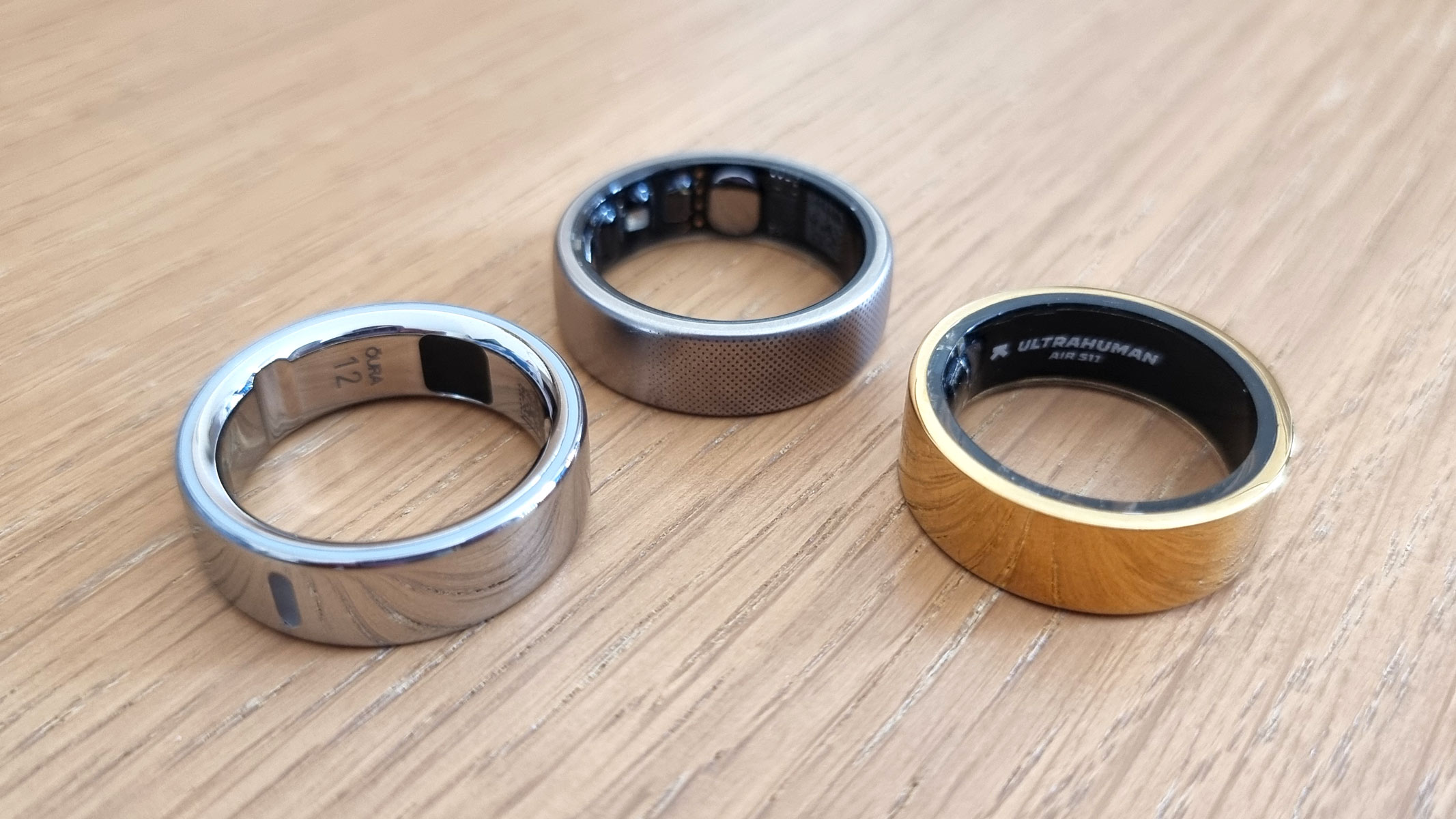
Our experts agree — there are many factors to look into when choosing a smart ring, but the most important ones are comfort, value for money and the quality of collected data. While it may be tempting to prioritize glitzy looks and advanced frills like multi-app connectivity, it is these three aspects that tend to have the biggest influence on your user experience.
“Choosing a ring starts with comfort,” Rail said. Choosing the right size and fit will help you ensure that your ring suits you well, even when your fingers get slightly swollen. “Order the sizing kit, wear each plastic placeholder for an entire day, and notice whether the finger throbs at night,” Rail said. Battery life is another important factor here. Four to seven days on a single charge are enough to provide consistent data without frequent charging breaks, Rail said.
Then, decide which measurements can help you make a tangible difference to your health and fitness. “Don’t get lost in the data — start with your goals,” Cann said. “For example, ask yourself what you want to change or understand about your sleep, then pay attention to factors that will help you achieve those goals. In my clinical work, I predominantly focus on sleep timing, duration and consistency. Look for a device that offers accurate estimates of these metrics, and these are based on high-quality measurements of body temperature, movement, heart rate variability, and respiratory rate.”
One thing you can largely ignore? Sleep stage tracking. “These estimates remain unreliable across all wearables and are not critical for most people looking to improve sleep,” Cann told Live Science.
Lastly, weigh the functionality of a smart ring against its price and potential extra fees. Many models require a subscription to unlock all of its tracking tools and advanced features, while some other rings may be subscription-free, but only offer basic metrics. Your choice here will largely depend on your needs, goals and preferences, but it may be worth a try. “A few of my clients have reported that they cancelled the subscription after the first year and still felt satisfied with the core data. Decide whether you value deep coaching and monthly new features or prefer a simple dashboard that keeps running without another bill,” Rail said.
That said, be mindful that information overload can lead to data-driven anxiety, Cann said. “Smart rings give you a helpful foundation, but it is what you do with that information that drives change. Use the data to guide actionable steps, like adjusting bedtime, improving wind-down routines, or tracking how stress affects your sleep. That’s how you turn metrics into real improvements,” Cann concluded.
Latest updates
August x, 2025: The guide is first published.
How we tested these smart rings
How we test the best smart rings
We are experienced fitness professionals and sports enthusiasts who have spent many years trying and testing activity trackers, including smart rings and other screenless devices. You can trust our judgments — we have a deep passion for wearable tech, use several different devices at a time, and are always on the lookout for the next big thing to help us achieve our health and fitness goals. We have first-hand knowledge as to what works and what does not live up to expectations.
That said, we also pride ourselves on being fair and objective in our reviews. All smart rings in this guide were tested to the exact same standard, using the same procedures. After spending at least a month or two with each testing unit, we ranked it across the following categories:
1) Design. We look into the size, weight and appearance of the smart ring in question. We assess whether it is comfortable to wear and sufficiently customizable (for example, we check how many colors and sizes it comes in), and try to gauge its durability based on the materials it is made of and any scuffs and scratches it may have sustained during testing.
2) Features. We give our verdict on its overall functionality. How many health metrics and activities does it track, and how detailed are these measurements? How many apps can this smart ring connect to? Can it explain your data and provide personalized health advice, and if so, is it actionable and easy to understand?
3) Performance. We put the smart ring through a range of activities to test its battery life, general tracking accuracy and app connectivity. We also assess the validity of its heart rate tracking features using either a chest-strap heart rate monitor (such as the Polar H9) or a medically graded fitness tracker like the Whoop MG.
Verdict. Finally, we try to answer the key questions: Who is this smart ring for? Should you buy it? If so, does it deliver good value for money? After testing, we calculate a final score out of five and explain our reasoning behind it.


